2023-2024: Sarah Breen | Sandra Tarabochia | Samuel Huskey
2022-2023: Carol Silva | Denise Stephens | Chad Davis | David McLeod | Doug Gaffin | Michele Eodice | Ronald Schleifer
2021-2022: Belinda Biscoe | Gerilyn Soreghan | Michael Bemben | Bonnie Pitblado | Kari Chew | Ingo Schlupp
2020-2021: Ji Hong | Matt Stock | Ann West | J.P. Masly | Crag Hill | Chung-Hao Lee | Katherine Pandora | OU Press
Profiles in Open is an initiative of the University of Oklahoma Libraries Open Initiatives and Scholarly Communication (OISC) unit that features opinions and experiences of OU scholars who advocate for open access, open research, and open pedagogy practices. Examples of profilees include students, staff, and faculty that have published open access articles and journals, created and published open educational resources (OER), received OU research publication subvention funding, or advocate for open access through other measures.
The initiative also highlights campus entities, such as OU Press, that publish open access materials as part of their open initiatives.
Suggestions for future profiles of OU faculty members, administrators, staff, or students who are working "in the open" are welcome, including self-nominations. Contact Nicholas Wojcik, Scholarly Publishing Librarian, for more information.

Samuel Huskey – 2023-2024
November 3, 2023
Samuel Huskey (Ph.D., University of Iowa, ORCID: 0000-0002-8192-9385) is a professor in OU’s Department of Classics and Letters. His scholarly interests are Greek and Latin language and literature (especially bucolic poetry), textual criticism, and digital humanities. In addition to serving as the Information Architect for the Society for Classical Studies, he is Director of the Digital Latin Library, a project that focuses on publishing openly available, born-digital critical editions of Latin texts in human- and machine-readable form.
Why is open access important to you?
To answer that question, I’d like to reflect on the Latin motto of the University of Oklahoma: Civi et Reipublicae. Unlike the mottos of other institutions of research and higher learning that elevate abstract ideas like Veritas (“Truth”) or Lux (“Light”), OU’s motto states its purpose clearly and succinctly: “For Benefit of the Citizen and the State.” We should bear that in mind when making decisions about the dissemination of our research and scholarship. Who benefits from putting research outputs behind a paywall or printing them in books and journals that cost too much for most individuals to purchase? We owe it to our fellow citizens to share our findings as widely as possible, whether those findings concern potential cures for diseases or insights into the very things that make us human. Open access is key to realizing the ideal enshrined in OU’s motto.
You have led the development of the Digital Latin Library, a grant-funded project that seeks to facilitate the discoverability and readability of texts written in Latin. Could you talk about the project and its relationship to open scholarship?
From the first, open access informed the development of the Digital Latin Library, and it remains a guiding principle of the project to this day. The DLL has a two-fold mission: 1)To publish and curate critical editions of Latin texts, of all types, from all eras; 2)To facilitate the finding and, where openly available and accessible online, the reading of all texts written in Latin.
With regard to the first part of the mission, we have developed a new approach to publishing critical editions of Latin texts. Traditionally (literally for centuries), scholars have worked with one or another of a handful of academic presses to publish critical editions. Those presses have handled the review, production, marketing, and distribution processes—all of which contribute to the high price of the finished, printed product. Our model makes use of developments in technology and scholarly communications to produce freely and openly available digital editions in the form of datasets that can be visualized in a variety of forms: as web pages, in visualization tools, and as print-on-demand books. Instead of publishers managing the peer-review process, the three learned societies associated with the DLL (the Society for Classical Studies, the Medieval Academy of America, and the Renaissance Society of America) do it, the idea being that scholarly societies are in the best position to determine what is or is not up to the standards of scholarship. Instead of investing all of our effort into the costly endeavor of producing printed books, we focus on the creation and curation of editions as high-quality datasets that are openly available to anyone with a connection to the internet.
As for the second part of the mission, the DLL is in the process of building a Linked Open Data catalog of all Latin texts available online. It is a slow process, since different projects use different approaches and formats for publishing Latin texts on the internet. Eventually, however, we aim to create an LOD resource that will allow anyone to find and read any Latin text from any era.
For all of our projects, we have used open-source tools and standards, and we make our own software and tools available in open data repositories. We also make every effort to publish the results of our research and scholarship in open access outlets. In cases where that is not an option, we put pre-print copies in the SHAREOK repository.
Why did you agree to serve as a member of the OU Faculty Senate ad hoc Open Access Policy committee, and what do you see as the importance/value of the committee’s work?
It would have been difficult to say no to working on a project that aligns so well with my own priorities for research and scholarship, and it was all the easier to say yes to working with such a great group of people. Karen Rupp Serano, Katherine Pandora, J. P. Masly, and Bin Wang were fantastic committee members, and Darren Purcell did a great job as our chair. And the support we received from experts in Open Access like OU’s own Melissa Seelye was remarkable. As for the importance and value of the committee’s work, not only did it align OU with the top research institutions in the world when it comes to promoting the open accessibility of new knowledge, it also reinforced our motto of being for the benefit of the citizens and the state of Oklahoma.
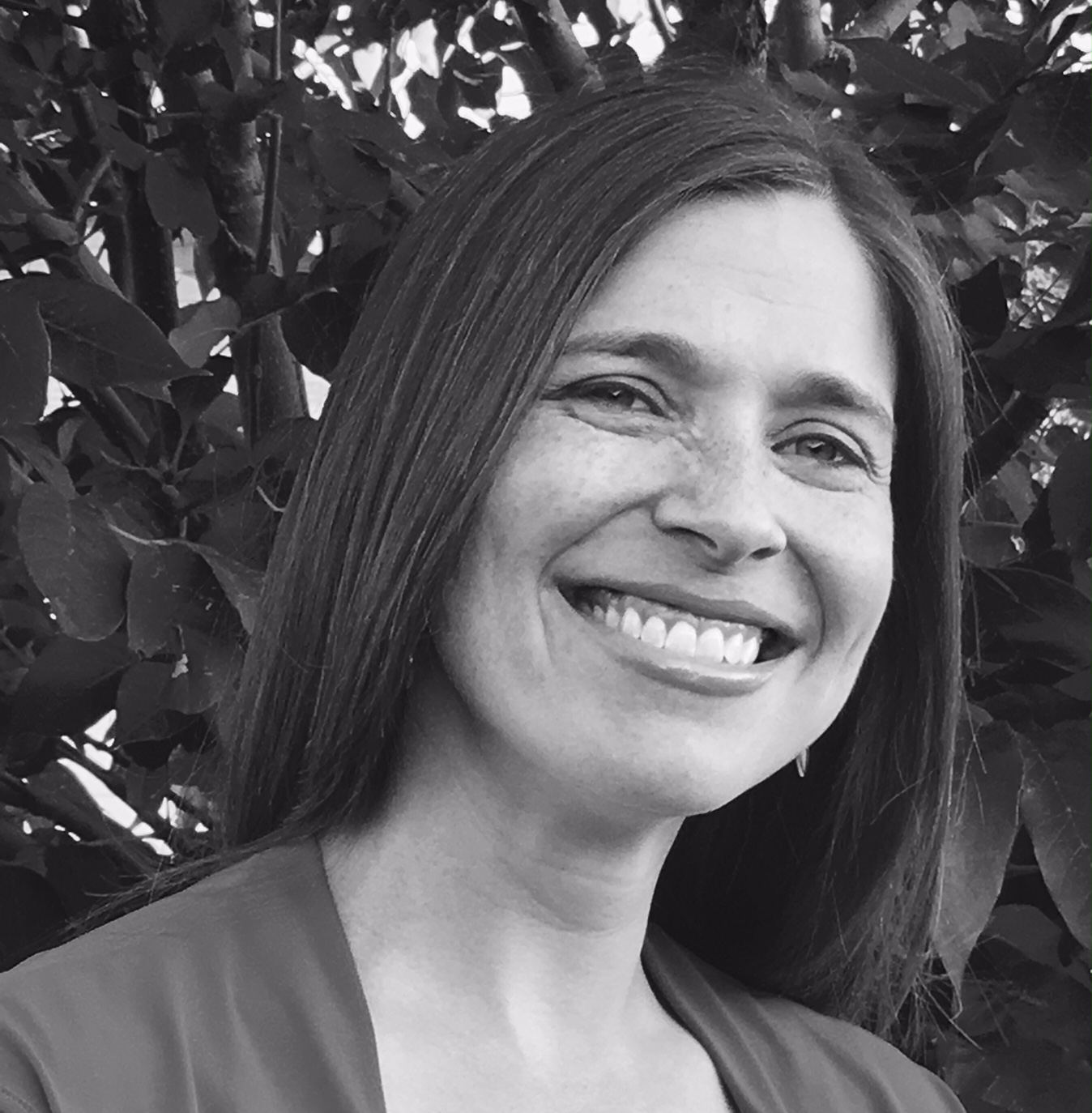
Sandra Tarabochia – 2023-2024
October 1, 2023
Sandra Tarabochia is an associate professor of English in Rhetoric and Writing Studies at the University of Oklahoma. She is currently an editor of the online open access journal Writers: Craft & Context, published in partnership with the University of Oklahoma Libraries on the Open Journal Systems (OJS) platform.
Dr. Tarabochia is the author of Reframing the Relational: A Pedagogical Ethic for Crosscurricular Literacy Work, published in the CCC/NCTE series Studies in Writing & Rhetoric. You can listen to an interview with Dr. Tarabochia about her book here. She co-edited the collection Diverse Approaches to Teaching, Learning, and Writing Across the Curriculum: WAC at 25, published with WAC Clearinghouse. Scholarship based on her ongoing longitudinal study of faculty writers can be found in Writing & Pedagogy, Composition Forum, Composition Studies, Written Communication, and Peitho.
Dr. Tarabochia is one of few researchers to use poetic inquiry, an arts-based research methodology, to study the lives of writers. She facilitated poetic inquiry workshops at the 2021 Watson Conference and 2022 International Congress on Qualitative Inquiry and has a chapter on poetic inquiry forthcoming in Improvisations: Methods and Methodologies in Lifespan Writing Research, the first book in a series sponsored by the Writing Through the Lifespan Collaborative.
How much did you know about open access publishing before you started publishing openly?
When I started as a tenure-track faculty member, I was steered toward certain journals and publishers because print was then perceived as required for scholarly credibility. I knew very little about open access publishing before publishing openly, but I finally submitted to open access venues because they were the best fit for my work and featured the scholarly conversations I was most excited to join. I soon discovered my open access publications generated more traffic, energy, and connection than my print publications. Colleagues from the across the country reached out to tell me how an article I wrote resonated with them days, sometimes hours after it was published openly. They were eager to circulate my work among their networks and assign it in graduate courses, which was easy to do with open access scholarship. Now I purposefully seek out open access journals for my work.
Why did you choose to make your journal, Writers: Craft & Context, an open access journal?
Why did you choose to make your journal, Writers: Craft & Context, an open access journal?
My fellow co-editors—Aja Martinez (University of North Texas) and Michele Eodice (formerly OU)—and I agreed from the start that our Writers: Craft & Context journal (WCCJ) would be an open access journal because open access publishing aligns with our vision for the journal and our values as editors. WCCJ is an interdisciplinary journal that publishes a wide array of material focused on writers: the work they do, the contexts in which they compose and circulate their work, how they are impacted by policies and pedagogies (broadly conceived), and how they develop across the lifespan. We invite contributions from a range of academic fields as well as from community experts outside academia, including program leaders, activists, volunteers, artists, and others who see, support, and do the work of writing in non-academic contexts. Because our subject matter, style, and audience are so wide ranging and diverse, open access is essential.
Moreover, we are committed to inclusive publishing, which means publishing new voices and approaches to sharing expertise, experience, and research; encouraging accessible forms of writing that embody diverse sources of knowledge; sponsoring engaged discourse among members of the editorial and review teams and readers and writers; and building long-term mentoring and collaborative relationships across disciplinary, institutional, and community boundaries (see the WCCJ website for more about our commitments). Open access publishing enables us to activate these inclusive, transformative values every day. We attract readers and potential contributors who are hungry for cutting edge content and novel ways of composing not found in mainstream publications. Without the constraints of print journals, we can work creatively with authors to realize their visions for multi-genre, multi-modal compositions (see We Read Your Letter and Abandon This Palace of Language for examples). Because we are not bound by cycles of print journals, we can be flexible with writers and reviewers, and our own needs as editors, as we all live messy human lives. We can take the time to foster meaningful mentorship and deep relationships among an ever-widening network of people contributing in myriad ways to the journal and the community it engenders.
What advice would you give to a scholar who is considering establishing an open access journal?
Go for it! In my experience, the possibilities are boundless with open access publishing. Instead of contending with traditional limitations, your time and energy are focused on “how can we make (X new idea) happen?” As you make the move toward open access editing/publishing, take the time to gather a committed, ambitious, innovative team willing to embrace uncertainty, think outside the box, and take problem-solving in stride. The OU Libraries Publishing Services team has encouraged and embraced this spirit from the moment we brought them the seed of an idea for Writers: Craft & Context. They welcomed every wild vision, new challenge, and outrageous “what if…” we brought to the table. This kind of collaboration is one of many benefits to open access publishing. If you want to produce a dynamic, accessible, widely circulated product and experience intellectual stimulation and joy in the process, make the leap and pursue an open access journal.
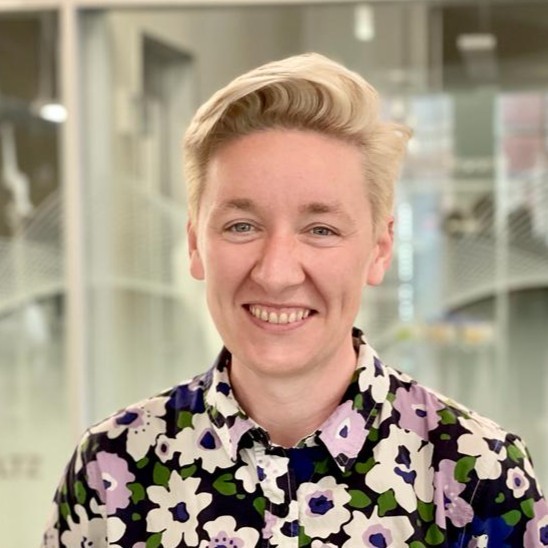
Sarah Breen – 2023-2024
September 8, 2023
Dr. Sarah Breen (they/them) received their PhD in Biomechanics at the University of Limerick in 2012. Dr. Breen has been teaching at the university level for 10 years across three countries (Ireland, England, and the United States), and several degree programs (e.g. Sport Science, Physical Education, Health Promotion, and Engineering).
Dr. Breen is currently the Chair of Diversity, Equity & Inclusion and Associate Professor in the Stephenson School of Biomedical Engineering at the University of Oklahoma. Dr. Breen holds fellowships with the International Society of Biomechanics in Sport (ISBS), and the Higher Education Academy (HEA). Dr. Breen serves in a variety of service roles with several international societies. Dr. Breen is past Vice President, (Publications) for ISBS and currently supports the Black Biomechanists Association, the International Women in Biomechanics, and the Advancing Women in Biomechanics Groups.
Dr. Breen’s primary area of research expertise is clinical biomechanics, and their research focuses on measuring human motion, with an emphasis on injury and clinical gait rehabilitation. Dr. Breen has also been recognized as a thought leader in the scholarship of technology enhanced learning, hosting several international workshops on online instruction in higher education. Dr. Breen received an OU Libraries Alternative Textbook Grant in 2022 for authoring openly licensed Biomedical Engineering lab manuals, (Vol.1 and Vol.2)
How have your students benefited from your adoption/creation of open educational resources(OER)?
My students have been very excited to use the newly created Lab Manuals for our BME lab courses. The lab manual has made class assignments and activities far more streamlined. Having all lab documents including experimental procedures, rubrics, and assignment outlines organized in an accessible electronic document has enhanced the student experience immensely.
How has utilizing OER helped you achieve your pedagogical goals?
The process of developing this open access lab manual was extremely beneficial for me as an instructor. It forced me to think about the flow and progression in my courses in a way that I have not had the opportunity to do in the past. Thinking about the accessibility of my open access ebook has also allowed me to put into practice many of the universal design principles that are core to my teaching philosophy.
Do you have any specific advice for instructors that want to adopt or create OER?
Start early and engage your students for feedback throughout the process. Our students are some of our best reviewers with this content especially those who may have already completed your course with other resources before your newly developed OER textbook was available.
How do you think open access supports diversity, equity, and inclusion efforts?
The entire process of both developing and offering open access materials supports diversity, equity, and inclusion (DEI) efforts. During the proposal and development process, it allows authors the opportunity to investigate and consider the range of accessibility needs their readers (in this case students) may have, ensuring equitable use of the final product. The other, more obvious way that open access materials support DEI efforts are by removing the financial barrier of textbook purchase. This acts to level the playing field, increasing the possibility of recruiting and retaining talented students from a range of diverse populations. It is worth noting that this impact is far wider reaching than an author’s home institution, where these open access materials can be utilized both nationally and globally by other instructors who teach similar content.
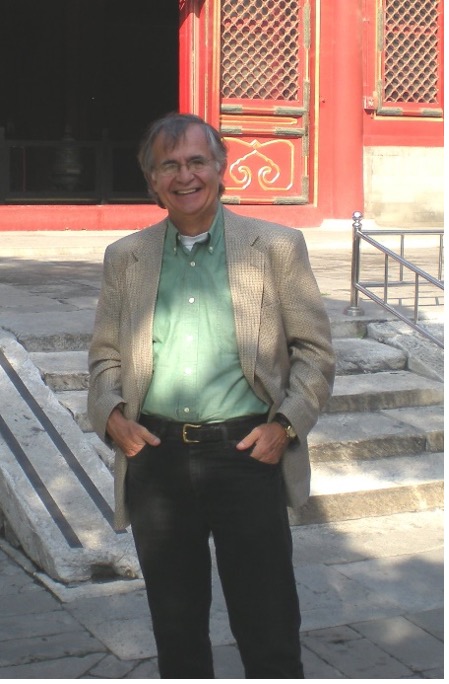
Ronald Schleifer – 2022-2023
April 1, 2023
Ronald Schleifer, Ph.D., is George Lynn Cross Professor of English and Adjunct Professor in the College of Medicine at the University of Oklahoma. His scholarship encompasses three areas of literary and cultural studies: he works in the “Culture of Modernism,” early twentieth-century studies with books focused on literature, music, economics and, most recently (with Tiao Wang, a colleague from China, 2022) on “literary modernism” in late twentieth-century China and early twentieth-century Euro-America. He has also worked since 1999 with his colleague Jerry Vannatta, MD, former Dean of the OU College of Medicine, on the “Health Humanities,” that is, on the ways that education in the humanities can help healthcare professionals more fully engage with their patients. For his work in the Health Humanities, he received the inaugural Norman Campus-Wide Research and Creative Activities Award for Excellence in Research, Design, and Creative Expression in the Humanities and Fine Arts. And he also works in “Semiotics,” which is the systematic study of the ways in which meaningful linguistic signs, language, and comprehensive narratives are produced and structured.
During his career at OU – which now spans more than forty-five years – he has worked on the production and dissemination of academic and general knowledge. He edited the scholarly-literary journal Genre: Forms of Discourse and Culture, edited here at OU for twenty-four years (1976-1999); was co-editor (with Robert Con Davis-Undiano) of a book series, Oklahoma Project for Discourse and Theory, published by the University of Oklahoma Press 1986-2000; and served as interim editor of Configurations: A Journal of Literature, Science, and Technology (The Official Journal of the Society for Literature and Science), 2012-12. Finally, he recently became co-editor of a book series, Humanities and Healthcare: Practical and Pedagogical Guides, published by Palgrave-Macmillan, and authored the open access book Literary Studies and Well-Being: Structures of Experience in the Worldly Work of Literature and Healthcare, published by Bloomsbury in 2023.
How have you benefited from publishing open access?
Open access publication builds upon and significantly enhances the widening of scholarship and knowledge affected by the internet in our lifetimes. It sets forth scholarly and creative work, which is freely available to readers across the world. This is particularly important to the more practical work I have pursued in the health humanities, which attempts to enlarge the understanding of men and women who are committed to improving and preserving the health and well-being of their fellow citizens. I think the best aspect of open access publishing is the free availability to all readers throughout the world.
Why do you choose to publish open access?
I am particularly proud that articles published in Genre are available open access. And I am greatly pleased that my latest book, Literary Studies and Well-Being: Structures of Experience in the Worldly Work of Literature and Healthcare (Bloomsbury Academic, 2023), has appeared open access with the generous support of OU Libraries, the Provost’s Office, the Office of Vice-President for Research and Partnerships, and the Dodge Family College of Arts and Sciences. Scholarship in general builds upon traditions of learning and thinking, and access to ongoing work – especially world-wide access – creates a broad network of colleagues working together for common ends. This is particularly true, I believe, in the practical work of the health humanities, which seeks to allow as many people as possible to discover wider ways of serving the health and well-being of individuals and communities. In the last number of years, I have worked with colleagues in China, Taiwan, Australia, Denmark, the UK, and throughout the United States. We are working together to find strategies and programs to enhance health and well-being throughout the world. Open access publication is a natural way to promote this program and other programs pursuing other aspects of human well-being.
What are some general benefits of open access publication?
A good way to emphasize the benefits of open access publication might be grasped in the call for books for Humanities and Healthcare, which was developed by the editors from the US and the UK. Books in the series, we note, will be dedicated to particular topics designed to further biomedical education in healthcare while putting the human experience at the center and contributing to the targets of the United Nations Sustainable Development Goal 3, Good Health and Well-Being. These books provide practical guidance for postgraduate professional students in healthcare and related areas, undergraduate students in the humanities and pre-health training, practicing healthcare workers, and informal carers. With the goal of bringing local and global concerns together, the series promotes and publishes studies that widen understanding of healthcare, well-being, and systematic care-taking. The aims of the series are to take a broad definition of healthcare and therapeutic practices in relation to physical and mental health in order to highlight practices within and beyond the clinic. Such a wide program in encouraging and disseminating learning and practices, which will benefit people throughout the world, is significantly served by open access.
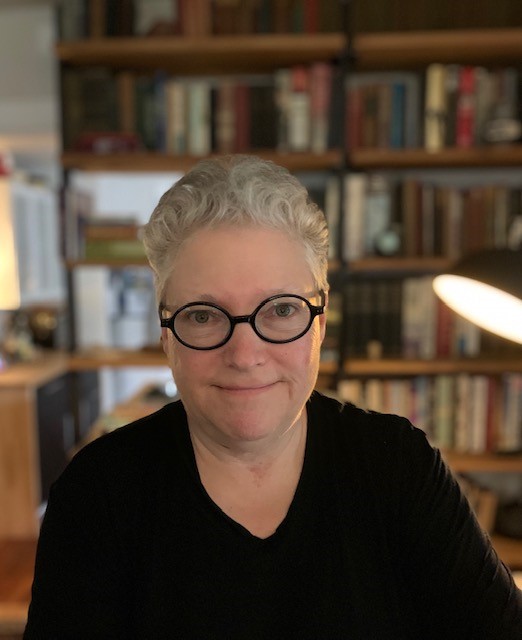
Michele Eodice – 2022-2023
March 1, 2023
Michele Eodice is the Senior Writing Fellow in the Center for Faculty Excellence at the University of Oklahoma. In this role she is a resource for faculty writers on manuscripts and proposals and offers writing retreats, writing groups and workshops, and individual faculty coaching. From 2006-2018 she directed the OU Writing Center and served as Associate Provost for Academic Engagement. From 1998-2006 she was the founding director of the writing center at the University of Kansas. Dr. Eodice is currently an editor of the online open access journal, Writers: Craft & Context, published in partnership with the University of Oklahoma Libraries on the Open Journal Systems platform.
Dr. Eodice is a co-editor of "Learning from the Lived Experiences of Graduate Student Writers," recipient of the International Writing Centers Association Outstanding Book Award for 2020. Other books include First Person 2: A Study of Co-Authoring in the Academy, The Everyday Writing Center: A Community of Practice, Working with Faculty Writers, The Meaningful Writing Project: Learning, Teaching, and Writing in Higher Education, Creative Ways of Knowing in Engineering, and (forthcoming in 2023) Teaching Meaningful Writing.
Her research focuses on faculty and graduate student writers, and she studies undergraduate student writing experiences through the Meaningful Writing Project, launched in 2010. Her career-long scholarly interests include collaborative authorship, writing groups, mentoring and coaching writers, and writerly identity. Her community service includes facilitating digital storytelling with community members and facilitating writing groups with writers who are incarcerated.
Why do you think open access is important to the OU community?
Through my work in the Center for Faculty Excellence, I witness the directions our faculty research is taking. It is becoming highly convergent and even more collaborative, so we want and need access to the best science—the best writing and the timeliest data—and making this available to all through open access is not just showcasing publications by OU scholars, it is supporting the convergent research, allowing emerging researchers to build on what is happening, and, most important, broadening participation to include more voices and perspectives. I think open access will evolve to be a platform for more transparent peer review and a plurality of voices and less about the transaction of publishing.
As a co-founder and co-editor of the open-access journal Writers: Craft & Context, what do you see as the primary benefits of such publishing partnerships between scholars and academic libraries?
I think libraries/librarians have always been the bridge between scholars and the world out there—they are always thinking ahead. We (including Sandy Tarabochia, University of Oklahoma and Aja Martinez, University of North Texas) had a vision of what we wanted as editors, and OU Libraries had the staff, expertise, space, time, and genuine interest in guiding us to develop the journal online. This is a solid and positive partnership. It was smart to develop and grow the Open Initiatives & Scholarly Communication unit. The team is so responsive and knowledgeable.
How do you think open access and other open research practices support diversity, equity, and inclusion efforts?
The equity and access promise of OA is truly enacted. For example, recently our editorial team questioned the use of “blind review” as a term in the publication process. We were about to request a change in the Open Journal System when OJS itself decided to make that change in the infrastructure—which can potentially shift how people think about peer-review integrity—to “anonymous/double anonymous” rather than using an ableist term. The OISC unit advocated for this to happen, and we appreciate their shared commitment. What comes next, I think, is likely a more transparent/shared open peer-review apparatus that invites real-time input from a range of scholarly perspectives.
From working with some Indigenous scholars in Canada, I’ve learned about the concept and practice of Knowledge Mobilization. This concept moves us away from traditional dissemination practices [sent to one journal/limited readership/paywall, etc.] to really moving the work, circulating, to reach new audiences, be accountable to readers, honor multiple ways of knowing, genuinely serve communities, and help solve real problems more broadly. It is less about how many citations you get in print—and more about how your work can truly move into communities. We do our work using public funding—so let’s let the public know what we are finding out that can really make a difference.
You were at the University of Kansas when they passed the first institutional open-access policy. What inspired faculty at KU to develop the policy, and what lessons do you think that holds for the University of Oklahoma?
I was not directly involved in that effort at KU—but I was very influenced in my thinking by my late friend Richard Fyffe, who at that time (early 2000s) was assistant dean for scholarly communication in the KU Libraries. He really had vision and he had a true intellectual grasp on how complex scholarly communication is/will be and named the tensions between academic culture as gift economy and the imperative for publication to function as value in a market economy. Librarians/libraries anticipated many of the advances and challenges in the area of scholarly communication, thank goodness!
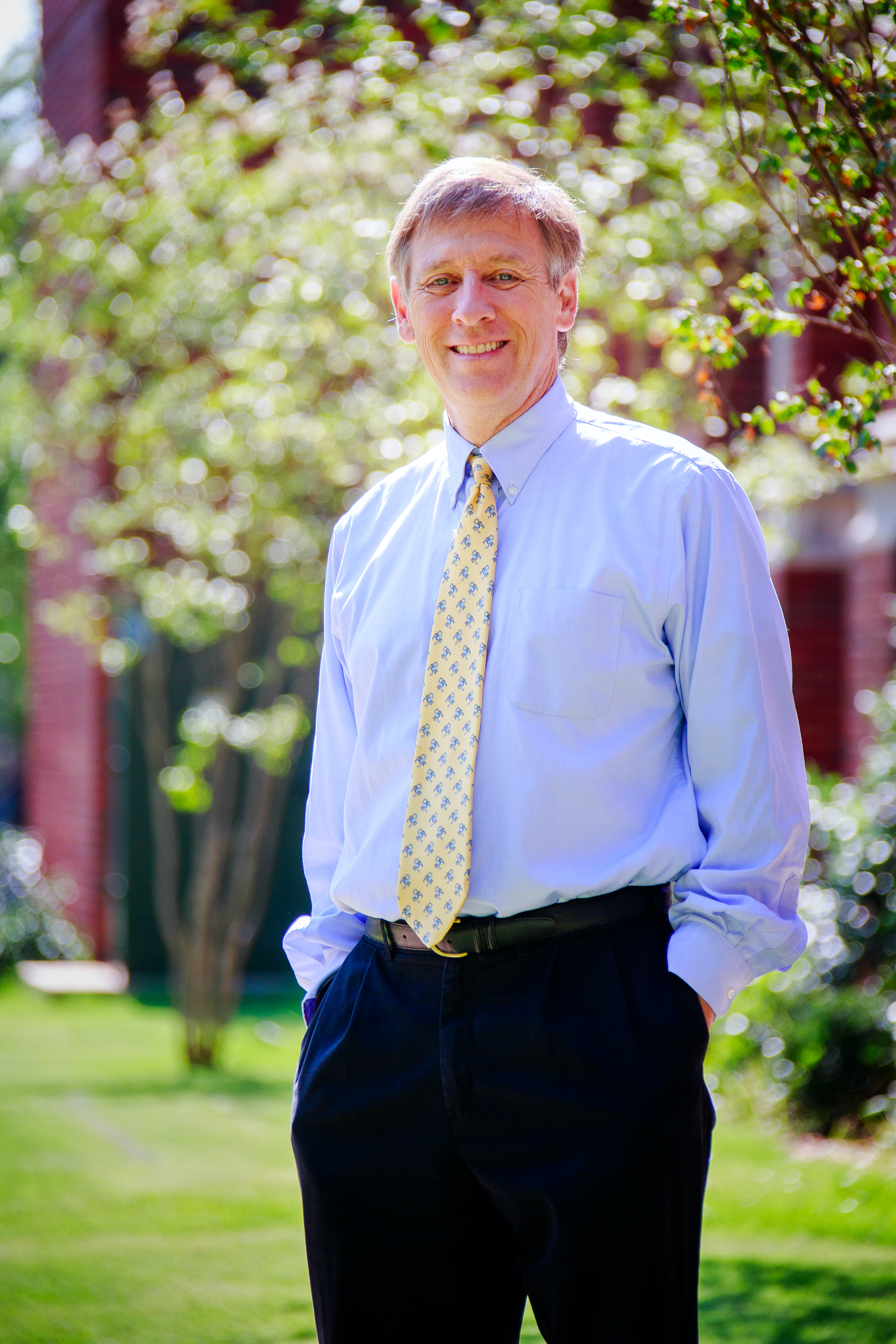
Doug Gaffin – 2022-2023
February 1, 2023
Doug Gaffin is Professor Emeritus of Biology at OU. He has served as Dean of University College and Interim Dean of the Honors College. Dr. Gaffin studies scorpion sensory biology, with a focus on navigation. He is extremely proud of the many undergraduates who have worked in his research laboratory, over twenty of which became authors on published papers before they graduated from OU. Visit his website at http://scorpionlab.douglasgaffin.com/.
Dr. Gaffin has received the David Ross Boyd Professorship, the Regents’ Award for Superior Teaching, and the Outstanding Freshman Advocate Award from the National Center for the First-Year Experience. He loves volleyball, camping, playing the banjo, and hanging out with his wonderful wife Dr. Mariëlle Hoefnagels.
Dr. Gaffin is also a four-time recipient of OU’s subvention funding to help support the open publication of his research, including his recent articles “Synaptic Interactions in Scorpion Peg Sensilla Appear to Maintain Chemosensory Neurons within Dynamic Firing Range” and “Evidence of Learning Walks Related to Scorpion Home Burrow Navigation.”
Could you tell us about the professional connections your “Evidence of learning walks related to scorpion home burrow navigation” article, recently published open access in the Journal of Experimental Biology, has helped you make?
The best example I can give is an email I received soon after the article appeared. It came from arguably the most renowned scientist in my field (neuroethology). I will leave the person’s name out, but I have followed and admired this person’s works since graduate school. The email starts:
“With great fascination I read your recent JEB article on homing walks in Paruroctonus scorpions. I very much like the way by which you address the scorpion's homing task.”
The email continued with several paragraphs of ideas for further experiments. I replied with some thoughts of my own and have received additional correspondence. I am currently in the process of drawing up a protocol to test some of the ideas we discussed in the exchanges. I feel the article’s open access helped our work get noticed and facilitated this important connection.
When you consider the impact of that article, especially in relation to the other articles in that particular journal issue, what are your key impressions as we approach the end of 2022?
To answer this, I did some analysis. I looked at the total views for each article in the journal’s issue as of October 17, 2022 (114 days after the article first appeared). Of the 18 articles in the issue, ours was the only one with full open access. The top chart at right (A) shows the number of views for each article in order of their placement on the journal’s website. As you can see, our scorpion article (red bar) was the eighth article in the issue but was the most highly viewed. Five of the articles in the issue were selected as featured articles with a small blurb about each at the top of the website. I suspected this added exposure may account for the numerous views of our article, so I ranked the articles by number of views (chart B) and indicated the order of placement of the five featured articles with numbers atop the bars. Our article was placed second in the featured list yet was viewed over three times more than the first featured article. The third chart (C) shows the average views of all the articles and just the featured articles (+SE) compared to our scorpion article. I divided the total views for our article by the average views of the non-open access articles in the issue and got a relative citation rate of open access vs non-open access of 4.9 for our article. This number is in line with an analysis published in the journal eLIFE that compared open access to non-open access articles for various disciplines. In fact, I was encouraged to see that our 4.9 rate was considerably higher than the rate for other biology articles monitored in the eLIFE article. To sum up, my impressions as of October 17 were very good – that open access was having a great positive effect on our paper’s exposure.
Have you seen a difference in the citation rate between your open access work and your paywalled work?
I have not formally tracked the metrics for my previous work, including my paywalled work. However, I have noticed that my h-index is rising some. It takes a while for these measures to change, but it seems correlated with my increased publishing in open access venues.
Why do you choose to publish open access?
I choose to publish open access for two main reasons. First, from my experience, open access has increased the visibility of our published work. Second, and more importantly, I think open access helps level the field for those without resources to access crucial scientific information.
Would you encourage others to publish open access? If so, why?
Yes, I would, especially since the library and offices of the Vice President for Research and Partnerships and Provost have been so generous and accommodating with grants to offset the publication costs. I think it is especially important for early career researchers to get their work out and noticed and my personal experience suggests that open access publications can help with this.
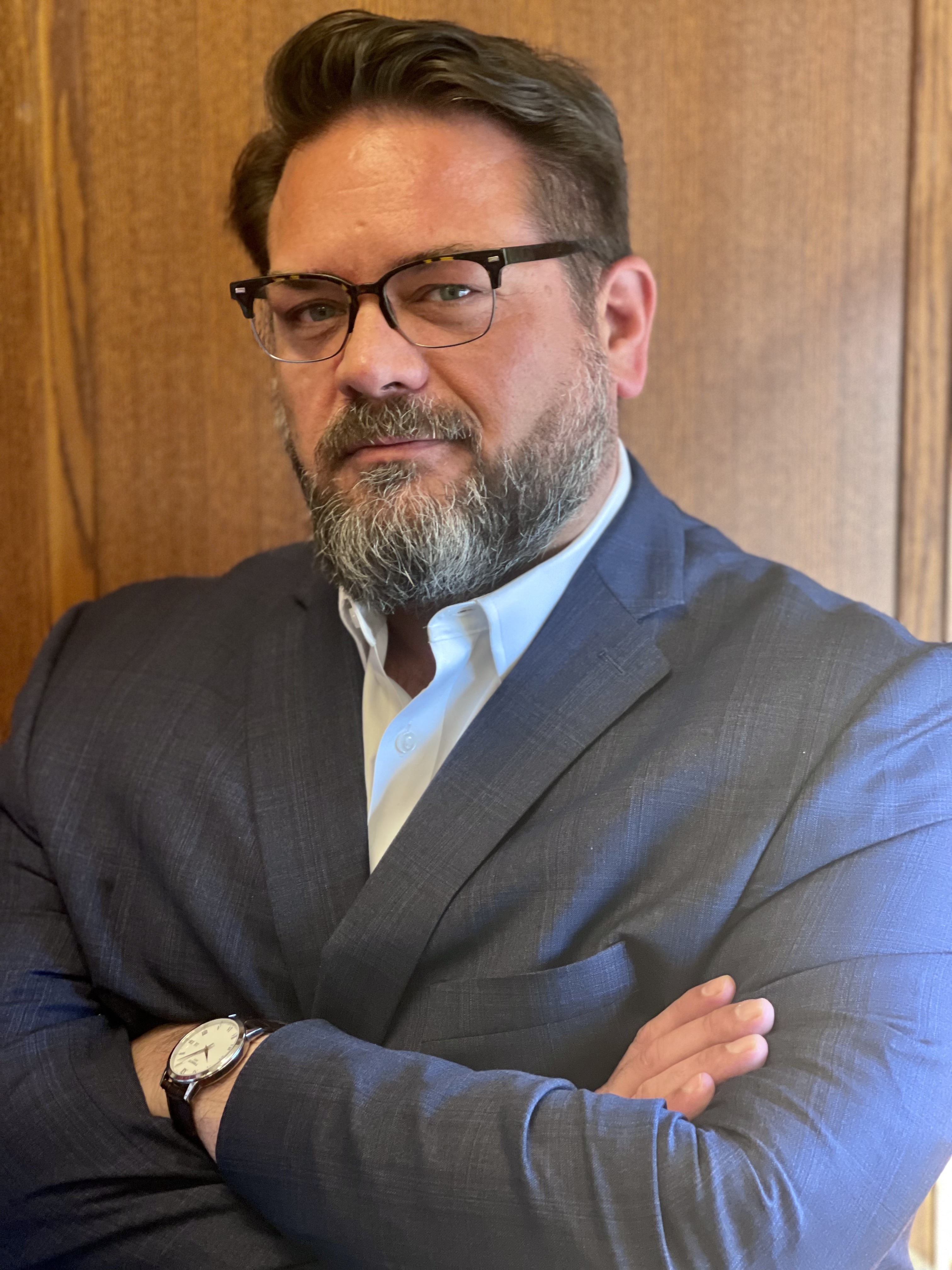
David McLeod – 2022-2023
December 1, 2022
David McLeod, Ph.D., is Associate Director and Associate Professor of the Anne and Henry Zarrow School of Social Work at the University of Oklahoma. He holds affiliate faculty status with the OU Department of Women’s and Gender Studies, the OU Center for Social Justice, and the Ruth Knee Institute for Transformative Scholarship. Additionally, he is the President-Elect of the National Organization of Forensic Social Work and Chair of the Oklahoma Children of Incarcerated Parents Advisory Committee to the Legislature.
Dr. McLeod’s research focuses on neuroscience, female sexual offending, trauma, domestic violence, and social work education, among other subjects, and he has earned numerous teaching, service, and research awards, including the Anne and Henry Zarrow School of Social Work “Professor of the Year” award, for which he is a four-time recipient.
He is also very engaged in a range of open initiatives. For example, he serves as the Editor-in-Chief of the Journal of Forensic Social Work, a peer-reviewed, open access journal formerly published behind a paywall but now available for free through OU Libraries. Additionally, he has utilized subvention funding from OU Libraries to publish his research openly, including the articles “Intimate Partner Violence: Innovations in Theory to Inform Clinical Practice, Policy, and Research” and “Modernized female sex offender typologies: Intrapsychic, behavioral, and trauma related domains.” More recently, he has been exploring open educational resources, including converting to teaching with an open access book.
How much did you know about open access publishing before you started publishing openly?
To be fair, I started following and learning more about open access probably around 2012 or so. At that time, a group of scholars from around the world had come together and created a movement to protest the paywalls with the Elsevier publishing platform. It was an exciting time for scholars. We were bringing to question the ethics of restricting access to knowledge, and I was intrigued by it. As someone who publishes for the sake of reducing violence in our communities, I know that the people who need to see my work the most will likely not be able to pay $45 for access to one journal article. So, I started exploring open access then. Part of the problem for me at that time was as a junior academic, I still had a great deal of fear that my work wouldn't be seen as legitimate (in university structures) if I didn't publish in traditional spaces. I was caught between that and a fear that without the platform of the academy my work would have even less of a chance of making it to public consumption. Thankfully over the past ten years, the perspective of suspicion regarding legitimacy regarding OA has dwindled. People are learning about its rigor, legitimacy, and impact.
How do you think open access supports diversity, equity, and inclusion efforts?
I think this is the most crucial part of open access. The internet allows us to share and disseminate information in prolific ways, which has real-world implications. We live in a post-truth era by some metrics, and the information transmitted online is often not rooted in empirical knowledge development. To address this, scientific knowledge must be accessible to everyone, and open access gives us that opportunity. It empowers anyone with a cell phone or access to a public library to be able to find information that could be vital to an individual, organizational, or community well-being.
Have you seen a difference in the engagement of your readership since making your journal open (vs. when it was behind a paywall)?
I think there's an absolute difference. It's a difference that presents itself in multiple ways. On the one hand, the information is open and accessible, and available to anyone who can click a link. But there's an important thing happening in the background as well. As an organization, we can make a stand with an open access journal. By investing our time, energy, and social capital into this project, we can say that the human good is more important than the bottom line. With this, we can communicate the particular topics of each piece of scholarship and the overarching theme that we value people and believe everyone should have access to knowledge no matter where you come from or what resources you have available to you. That's a pretty powerful thing to be able to do.
How has utilizing open educational resources (OER) helped your pedagogical goals?
I've been interested in the application of freely available resources in learning activities and content delivery in the past decade. From online videos to websites, to utilizing curation practices for students to investigate specific topics, to creating wikis or toolkits, or learning how to build websites or create infographics, I've been highly engaged in using web-based tools to help students learn how to access, engage with, and share information. It's been exciting over the past few years as open education resources have become more openly accessible and legitimized. It's not that these resources weren't good before, but it is that now they have become more accepted. We must create spaces where students can take what they've learned in the university and apply it confidently in the community, and acceptance is part of that. I've recently transitioned to a completely open access textbook for my statistics course, which was easily integrated into the Canvas modules. Not only is the book free, but it's broken up in a way that makes it slightly different from traditional textbooks while delivering the same content. I believe the digital space allows us to organize content for educational purposes in unique ways more aligned with knowledge consumption practices of people in learning communities in 2022. We live in a different world and have access to information in different ways, so the idea that the professor is the only one with access to knowledge is antiquated. What I seek to do, particularly with open educational resources, is demonstrate how students can develop a practice of identifying knowledge and learning how to assess what parts of it are trustworthy. I’m not the gatekeeper, I’m an experienced tour guide—someone to keep them safe and show the way.
Do you feel like you receive the support you need from OU Libraries for the various open access projects you are involved with?
OU Libraries have been instrumental in my success with open access at OU. Point blank. Not just in supporting the work in what is said, but in the practices of the library itself. For example, OU Libraries personnel took on an extensive workload to help me transition the Journal of Forensic Social Work (www.JoFSW.org) from Taylor and Francis to an open-source format published here at OU. I could not have done that by myself, and it not only benefits me but it also benefits my community of scholars and practitioners who serve across the globe in forensic social work. I have utilized OU Libraries’ subvention funding to help me publish in reputable spaces where processing and publication fees were needed to maintain the quality of a journal. And OU Libraries has supported my development and restructuring of course, specifically to utilize open access educational materials. I have found with OU Libraries not only a philosophical partnership, but also an incredibly supportive and helpful system.
Top of page
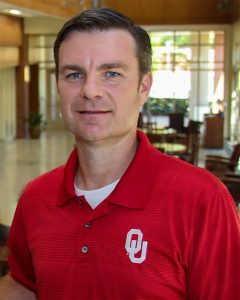
Chad Davis – 2022-2023
November 1, 2022
Chad Davis, Ph.D., is Instructor and Recruitment Coordinator in the School of Electrical and Computer Engineering at the University of Oklahoma, his alma mater. He holds an electrical & mechanical professional engineering license in the state of Oklahoma and is also a licensed private pilot. His research focuses primarily in areas related to aviation, including the design and development of a new GPS ground based augmentation system, neural network control systems, automation, and data acquisition systems.
Dr. Davis is the author of multiple open educational resources, including the ebooks "DC Circuits," its sequels "AC Circuits" and "Electromechanical Systems," and "Measurement and Instrumentation," all of which are freely available in OU’s institutional repository, SHAREOK. He has received multiple Alternative Textbook Grants from OU Libraries, which support faculty in switching from commercial textbooks to no cost course materials. Dr. Davis authored his own textbooks for a sequence of courses (ENGR 2431, ENGR 2531, and ENGR 3431) in the electrical engineering program and has shared them with the scholarly community under an open license. This means other instructors can remix and reuse his work in their own classrooms. With a combined 175,000 views, Dr. Davis is the most popular OU author in SHAREOK.
How has utilizing OER helped you achieve your pedagogical goals?
Originally, I looked into creating an open access book because I couldn't find a single textbook that covered all of the topics that were included in the specialized course that I was teaching. I could either create my own book or have the students purchase multiple books. When I considered the prospect of requiring multiple books it reminded me of a time when I was a college student where I had to purchase multiple books for a course, and it put a heavy financial strain on me. After I began the process of creating the book, I realized that having a book that focused on exactly the topics I wanted to cover in the course would make the course much more effective and make teaching the course much easier.
There are also other schools that have reached out to me to use the books so the impact of the books will go far beyond what I ever expected when I first struggled with the decision of whether or not to write the books.
How have your students benefited from your adoption/creation of open educational resources?
I have seen countless comments of appreciation in student evaluations and that positive feedback makes me glad I spent the time to do it. The amount of money I have saved the OU students to date is well over $100,000 and I feel pride in knowing that I played a part in helping them through college. It is also nice to know that if they ever need to refer back to something that I taught them they can go online and download the book to get a quick refresher.
Creating the book for the course also helped me solidify my knowledge in the subject and when I came to topics that were hard to explain I realized that those were likely the topics that students also struggle to understand. By adding extra explanations and examples to those difficult topics I have likely saved a multitude of students from unnecessarily struggling. After creating my first book I enjoyed the process so much that I ended up writing three more open access books.
What challenges did you encounter while adopting/creating an OER?
The hardest part in the process was getting started and coming up with a plan for the book, but once I got started it was much easier than I ever imagined it would be. The biggest weakness I had was knowing how to find images that were free to use and how to cite them, but the Open Initiatives unit at OU Libraries helped me with that every step of the way.
Top of page

Denise Stephens – 2022-2023
October 7, 2022
Denise Stephens is the Peggy V. Helmerich Dean of University Libraries at the University of Oklahoma. Prior to joining OU as dean in 2021, she was university librarian at Washington University in St. Louis and UC Santa Barbara, and she has held positions at the University of Kansas, Syracuse University, and the University of Virginia. Her accomplishments have included overseeing the large-scale renovation and expansion of library collaboration and study spaces, delivering innovative solutions to diverse and evolving scholar communities, and launching collaborative initiatives to promote academic success.
Dean Stephens’ current research interests are focused on measuring the impact of research libraries on the academic community. She has published in the Journal of Library Administration and the Journal of Academic Librarianship, and presented widely. Her 2022 work, “Developing Prospective Interim and Future Academic Library Leaders: Reflections for Leadership Practice,” was published in Interim Leadership in Libraries: Building Relationships, Making Decisions, and Moving On, and is openly available in SHAREOK, OU’s institutional repository.
Why is open access important to you?
I am deeply aware of the duty to ensure that we facilitate and provide access to scholarship supporting the vast range of research and instruction in the research university setting. The current scholarly communication ecosystem is so dominated by paywalled access to scholarship – even that created and funded on our campuses – that we are increasingly challenged to do that job. Significant and frequent fee increases, as well as increasing restrictive barriers to electronic information are present real barriers to the full range of scholarship our faculty and students need. As an academic librarian and library leader, I believe this condition inhibits our ability to meet the needs of our scholar community.
Why do you think open access is important to the OU community?
Greater awareness about open access as a choice for disseminating published scholarship may influence more of our knowledge creators to participate in open access publishing. That outcome is admittedly a work in progress requiring time and growing communities of faculty and student scholars to adopt open access (at least some of the time). In the short-term, openly accessible research and educational materials can make a positive impact on costs for both the institution and students. To be clear, there is a great deal of work to do before open access becomes a large part of disseminating scholarship. Nevertheless, it is a growing movement among universities around the world. For-profit providers are even starting to find ways to enable open access as an option for authors, though there are costs for participating. That’s where we here at OU are working to help mitigate those publishing fees for authors interested in participating.
Would you encourage others to publish open access? If so, why?
I have published open access and I encourage others to publish open access. Understandably, there are questions and sometimes real inhibitors to doing so. Yet the benefit of open publishing is considerable. Research has consistently shown that openly published scholarship is accessed and cited often because restrictions are removed and there is trust in the authority of the work. Also, removing barriers to accessing the range of research outcomes is simply good for expanding the range of scholarly information we can obtain with limited financial resources.
Do you have any specific advice for scholars who want to make their work openly available?
Be open to the idea. Feel free to consult with your liaison librarians about open publishers in your field. Finally, be aware of opportunities to participate in OU-sponsored open publishing programs. As always, the University Libraries is a wonderful place to start.
Top of page
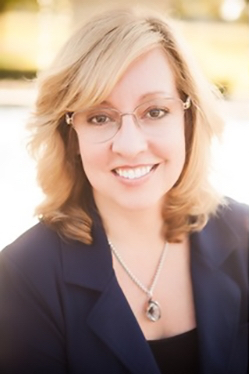
Carol Silva – 2022-2023
September 1, 2022
Carol L. Silva received her PhD in political science & public policy from the University of Rochester in 1988, and is currently an Edith Kinney Gaylord Presidential Professor of Political Science, and the Co-Director of the Institute for Public Policy Research and Analysis (IPPRA) at the University of Oklahoma. Her research focuses on the building and conduct of research programs for transdisciplinary teams, the coordination of resources that encourage and support the achievements of those teams, and contributing to social science discoveries. She is an experienced instructor, and directs research programs in the domains of environmental policy, the intersection of technology and democratic institutions, weather and climate policy, COVID-19 adaptation, and benefit cost analysis/non-market valuation.
Dr. Silva is also an advocate for open access and has made her work openly available through OU’s shared institutional repository, SHAREOK. Her open access articles include "Trust in Government Agencies in the Time of COVID-19" and "Bayesian versus politically motivated reasoning in human perception of climate anomalies."
Why do you choose to publish open access?
Equity and access. I support OA publishing because it fosters the possibility of a more diverse and wider audience for research and creative works. Arbitrary paywall barriers to access do not serve the goals of supporting ingenuity, knowledge growth, and changing the world for good. We live in a complex and rapidly changing world. We need all the good ideas, and all the minds. We do not have time to leave anyone out. Access to new research isn’t a given—locally or globally, and we want folks everywhere to be able to see our work, comment on it, and build on it with their own research and creative endeavors.
Our group was especially motivated to publish as OA given the important timeliness of the topic and the interdisciplinarity of the team. The topic, trust in government agencies in the time of COVID-19, was essential to explore as public officials and decision makers were making choices about their pandemic plans of action. As we faced a terrible pandemic, we also knew that we were in the middle of a public crisis of trust in the abilities of US government agencies. This book explores variations in the public’s trust at various levels of government and agencies with a nationally representative survey conducted in March of 2020. We believed in the importance of publishing this book as OA because of the fast-moving research environment with this time sensitive issue. Publishing OA typically gets the work out into the public domain much more quickly, increases visibility, and helps to avoid duplication of research and allow other researchers to draw on our findings as they conducted their own work in this rapidly changing and volatile research environment.
Did you experience any challenges publishing an open access book, and if so, could you describe them?
Our group did not face any difficulties or challenges in publishing our OA book. We are very thankful that the OU Libraries Open Access Fund was available to us. We appreciate the ease, support, and generosity that was provided to us by OU Libraries.
Do you have any specific advice for other scholars who are considering publishing openly?
Don’t be hesitant to publish OA. The increase in access and visibility is worth it. However, make sure you are working with a reputable journal. Predatory journals are out there, so make sure you know who you are working with.
Plan ahead. There are resources available to help you cover the costs. If you are pursuing contract and grant funding this is a great thing to budget for if the funder allows it-- and many funders do allow it.
Pursuing OA for your work is also a good thing to mention in discussions of “broader impacts” or how you plan to disseminate your work.
Be sure to apply for the OU Libraries Open Access Fund, which can significantly offset the cost of OA publishing!
Top of page
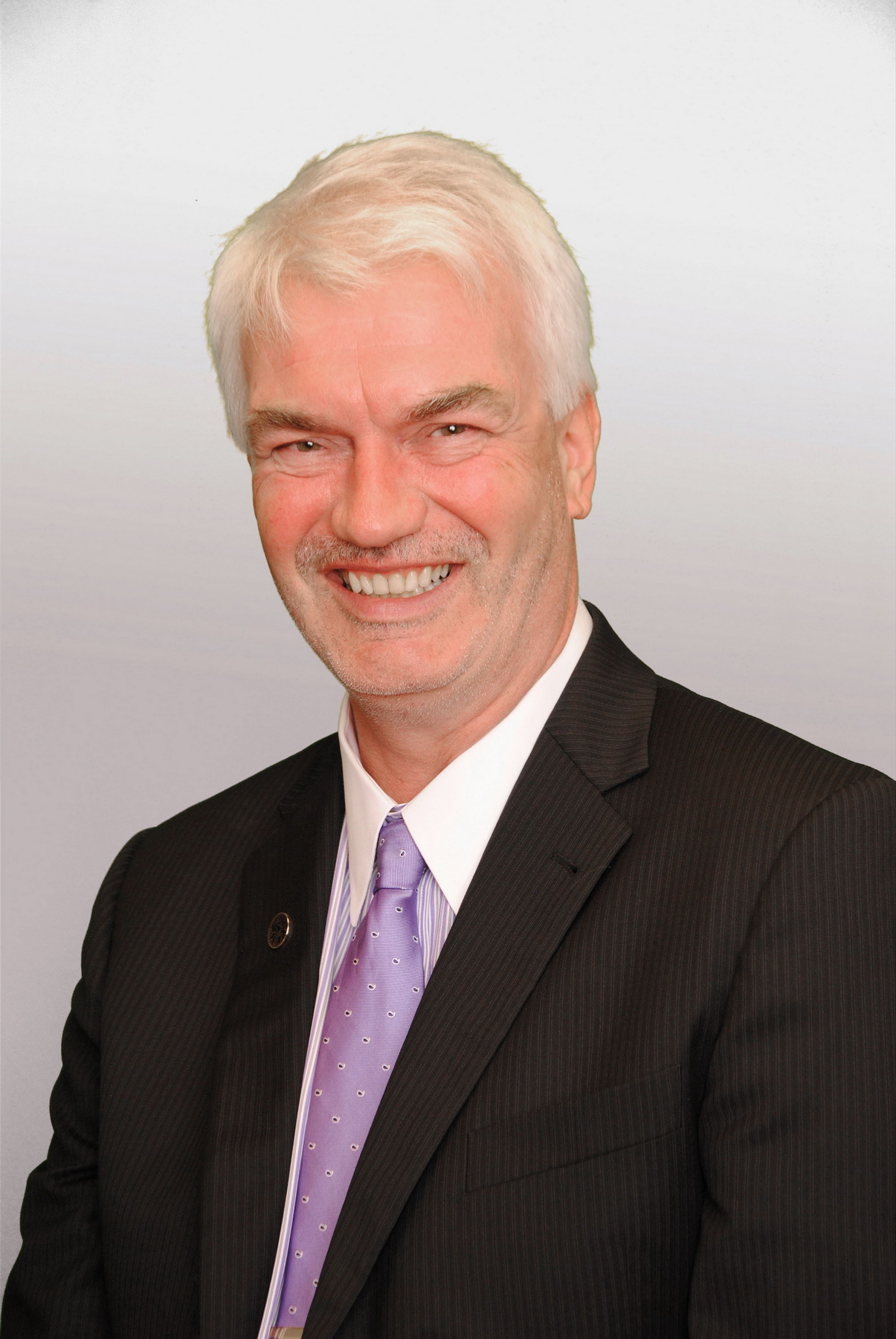
Ingo Schlupp – 2021-2022
May 4, 2022
Ingo Schlupp, Ph.D., is Presidential Professor of Biology in the Dodge Family College of Arts and Sciences at the University of Oklahoma. His research is based in ecology and evolution, with topics ranging from mating systems and reproduction, conservation biology of fishes, speciation, biology of cave dwellers, the evolution of life histories, and robotics and simulations. His work also includes livebearing fishes as models.
He is the author of the openly published articles "Biogeography of the West Indies: A complex scenario for species radiations in terrestrial and aquatic habitats" and "Development and validation of an environmental DNA protocol to detect an invasive Caribbean freshwater fish, the guppy (Poecilia reticulata)." Additional open resources by Dr. Schlupp can be found by searching SHAREOK, the joint institutional repository for the libraries of the University of Oklahoma (OU), Oklahoma State University (OSU), and the University of Central Oklahoma (UCO).
Why do you choose to publish open access?
All scientists stand on the shoulders of the titans that worked before us. Without access to their works, we are nothing. Equally critical for progress is uninhibited access to the published ideas of our contemporaries. Without reading the publications of our colleagues, friends, and competitors, we can’t make progress. Open access means that all scientists, not just those whose libraries can afford expensive subscriptions, have access to our thinking and can engage in discussion with us. We profit from this as much as they do.
Some of my scientific work is done in collaboration with countries in the global south, including several countries in the Caribbean. They have a right to access their own work freely and share it with their colleagues and students. In some cases, publishing open access is not just the right thing to do, but also shows respect. It becomes part of a fair approach to doing science.
How have you benefited from publishing open access?
Just like anybody else, I must read a lot to stay on top of developments in my field. And although I am in a privileged place with access to a lot of paid content, I benefit enormously from open access publications. They are usually of high quality and easy to find and retrieve. I can share these publications with my colleagues and students without worrying about restrictions.
Has your opinion of open access changed over time? If so, how?
A former student of mine insisted on publishing his thesis work in an inexpensive open access journal. At that time, I was concerned about the impact and visibility of his work, but he proved me wrong. I think nowadays one can publish open access and not worry about impact. I still use traditional outlets, but many of my papers are open access. I am also an editor for an open access journal.
What did you appreciate about working with OU Libraries to make your work open access?
The library is very supportive of open access publishing and is doing so very deliberately. I enjoy working with the librarians that oversee this. I feel very supported in the process and had only good experiences with this. Of course, the process could be a little more streamlined, but there is always room for improvement.
Top of page
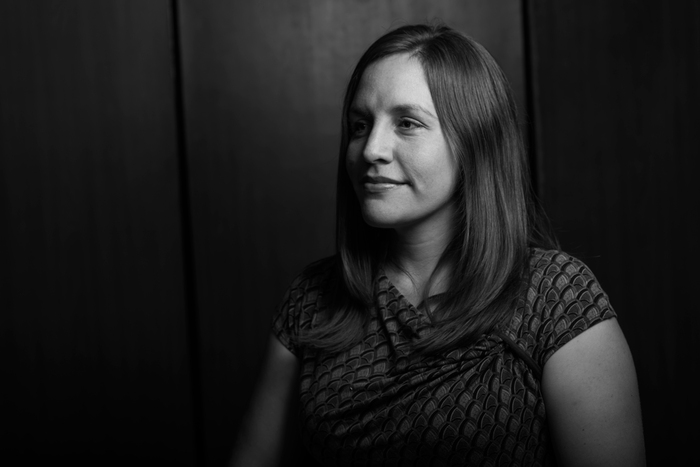
Kari Chew – 2021-2022
April 1, 2022
“Chokma, saholhchifoat Kari A. B. Chew. Chikashsha saya. Chikashshanompa' ithanali. Greetings, my name is Kari A. B. Chew. I am a citizen of the Chickasaw Nation and a Chickasaw language learner.”
Dr. Kari Chew is an assistant professor of Indigenous Education in the department of Educational Leadership and Policy Studies at the University of Oklahoma. She earned her doctorate in Teaching, Learning, and Sociocultural Studies with a minor in Linguistics from the University of Arizona in 2016. She completed a postdoctoral fellowship with the NEȾOLṈEW̱ “one mind, one people” Indigenous Language Partnership at the University of Victoria in 2020. As a scholar-practitioner committed to Indigenous language revitalization and reclamation, her work focuses on additional language learners, language curriculum, and the role of technology in Indigenous language education. She works closely with the Chickasaw Nation on language education projects, including Rosetta Stone Chickasaw and a complementing curriculum for high school students in Oklahoma public schools.
Dr. Chew has made extensive use of self-archiving in an institutional repository. "Self-archiving," also known as "green open access," allows an author to archive a version of their work into an online repository, making it freely and openly accessible. Dr. Chew is the author of numerous openly published articles including "Storying an interconnected web of relationships in Indigenous language reclamation work and scholarship," and "Chikashsha alhihaat Chikashshanompa' anompoli katihma: Chickasaws are still speaking Chikashshanompa" (written in both Chickasaw and English). Additional open articles, videos, and other resources by Dr. Chew can be found by searching SHAREOK, the joint institutional repository for the libraries of the University of Oklahoma (OU), Oklahoma State University (OSU), and the University of Central Oklahoma (UCO).
Why is open access important to you?
As a Chikashsha (Chickasaw) scholar committed to Indigenous language reclamation, most of my research is collaborative and grounded in the aspiration that Indigenous languages will be spoken for generations to come. Indigenous language revitalization and reclamation movements are led by Indigenous Peoples and not universities. Therefore, any work about Indigenous languages that takes place at the university must be shared back with communities. Open access publishing is one way to do this. Beyond peer-reviewed articles and chapters, I work to share knowledge through short film, artwork, guidebooks, and more. Institutional repositories provide a permanent online location and URI so that others can find, share, and cite these other forms of scholarship.
Would you encourage others to self-archive their work in an institutional repository? If so, why?
I would encourage others to utilize institutional repositories like SHAREOK. Beyond making scholarship more accessible, institutional repositories help protect authors by ensuring that they are sharing their work legally. Publishers have different rules about how and when authors can distribute their work. The librarians who support SHAREOK have helped me by communicating with publishers on my behalf to verify that work can be shared. In most cases, there is a way to share a version of the work even if the work was not originally published open access.
How did you learn about self-archiving your work?
I learned about self-archiving in my previous position as a postdoctoral fellow with the NEȾOLṈEW̱ “one mind, one people” Indigenous Language Partnership at the University of Victoria. This Indigenous-led project prioritized sharing information back to Indigenous communities.
Considering your extensive experience in self-archiving (AKA green open access) – the act in which an author archives a version of their work into an online repository, making it freely and openly accessible – could you share your thoughts in that area?
My advice is to research a publisher or journal’s policy about open access publishing and copyright prior to submitting your work. Some journals charge to publish open access and the fee can be very high. OU Libraries offers some support, but the award may not cover the full cost. Publishers may also have an embargo period that prevents authors, who did not originally publish open access, from self-archiving articles on institutional repositories for months or even years. While such practices may be viewed as the norm in academic publishing, they restrict efforts to share knowledge beyond the academy.
Other journals are always open access without cost to the author. For Indigenous scholarship, the World Indigenous Nations Higher Education Consortium (WINHEC) journal has an exemplary approach to publication. All articles are published open access and copyright resides at all times with the named author/s and if noted their community/family/society (https://winhec.org/journal). I look forward to more publishers honoring Indigenous protocols for knowledge sharing through their publication practices.
Top of page

Bonnie Pitblado – 2021-2022
March 1, 2022
With field work primarily based in Colorado, Bonnie Pitblado is an archaeologist who has spent more than 25 years exploring the relationship between the earliest Indigenous people and the high altitude environments of the Rockies. She is passionately dedicated to public archaeology and sharing her work with the public. This includes founding and directing OKPAN, the Oklahoma Public Archaeology Network, which sponsors a wide range of statewide programs, including archaeology conferences and workshops, curricula development for K – 12 classrooms, and more. It also includes publishing her work openly and advocating for open access publishing. Her openly published articles include "On Rehumanizing Pleistocene People of the Western Hemisphere" and "The dangers of conflating responsible and responsive artifact stewardship with illicit and illegal collecting."
Why do you choose to publish open access?
I have always advocated for maximum inclusivity and access for the archaeological work I am privileged to do. So many people beyond the walls of the Academy are vested in and care about what we do. I want all of them to be able to read what I have to say without encountering paywalls.
Currently the Libraries has read-and-publish agreements with Cambridge and Oxford university presses. What do you see as the value to authors and the university when the Libraries’ enters into such agreements?
The value is phenomenal to me, but I think that value ripples outward in important ways. As I mentioned above, I feel so strongly that our work should be accessible that I have chosen to pay $1,000 or more in author fees to ensure that it is. In the past few months, I have published a couple of pieces through OU's Cambridge read-and-publish agreement. I'd have paid for both to be open access on my own, so I am immensely grateful for an agreement that has OU covering those costs. I love feeling like the University stands behind me in my commitment to share my work.
How do you think open access supports diversity, equity, and inclusion efforts?
The paywalls that non-academics encounter when they try to access most of our work create barriers that reinforce inequity. How and why is it reasonable to expect that Jane-Q-Public will shell out $40+ to read a single paywalled article? How does that allow us as academics to advance our work beyond the Academy? How does that NOT ensure that those with the fewest resources have the least access to data and interpretations that are usually publicly funded?
I recently used open access to publish an article featuring the thoughts of several Indigenous colleagues. I did not want my name to appear on the article, because I wanted to elevate their voices. I worried that this might make the piece ineligible for open-access publication through a read-and-publish agreement, but I was thrilled to learn that it didn't. We didn't ultimately use OU's agreement for that paper, because one of the other authors was also at a university with that same agreement with the press. But the principle is the same, and it excited me to find a way to use university resources to help amplify colleagues' voices who might otherwise themselves be stuck behind a paywall.
Would you encourage others to publish open access? If yes, why?
Absolutely. If I could wave a wand and abolish paywalls forever, I would do it. If read-and-publish agreements are the workaround for now, then we should all be using it at every single opportunity. More access = more impact. For me, caring as I do increasingly about impact outside the academy, open access is pure gold. But it helps colleagues inside it, and without affiliations and therefore access to university libraries, just as much.
Top of page

Michael Bemben – 2021-2022
February 1, 2022
Michael Bemben received his doctoral degree from the University of Illinois at Urbana-Champaign in Exercise Physiology and is currently a David Ross Boyd Professor and C.B. Hudson Presidential Professor at the University of Oklahoma and Chair in the Department of Health and Exercise Science on the Norman Campus. Dr. Bemben also holds adjunct appointments at the Health Sciences Center in Oklahoma City and is a fellow of the American College of Sports Medicine, the Gerontological Society of America, the Research Consortium, and the National Academy of Kinesiology.
His general research emphasis encompasses the broad area of aging. Some of Dr. Bemben’s research projects have included the effects of different supplementation programs on enhancing muscular strength and muscle mass following training in older individuals, different training interventions for improving balance and postural stability in older women and in patients with Multiple Sclerosis, assessing changes in total and regional body composition with normal aging and following exercise interventions, age related changes in hormonal responses to resistance training, and the effects of blood flow restriction during exercise. Outcomes from his research has helped develop safe, enjoyable resistance training programs that can improve strength and muscle mass so that elderly men and women are able to retain or regain normal daily activities and maintain independence in the community.
He is the author of the openly published article Acute and Chronic Effects of Whole-Body Vibration on Balance, Postural Stability, and Mobility in Women With Multiple Sclerosis. Search for and discover additional open resources by Dr. Bemben at SHAREOK.
Why do you choose to publish open access?
Open access can apply to a campus repository, like SHAREOK, as well as journals that can range from a hybrid model with some freely accessible articles, to Gold OA, where all the materials are freely available. With this in mind, there are many reasons why I choose to publish open access. First, and perhaps most importantly, is the OA allows for the dissemination of research and scholarly activity to the widest possible audiences in a free and timely manner while still allowing me to maintain the copyright for my work. It also means that access to my research is made available to smaller institutions and scholars in other countries that might not be able to afford subscriptions to more traditional journals.
Publishing in OA also helps to promote diversity, equity, and inclusion since it allows historically marginalized and under-represented groups to publish and have their works read by colleagues regardless of whether or not they are affiliated with an academic institution.
Additionally, OA publications result in higher citation rates compared to articles that are behind a journal paywall and there is almost a 90% higher number of article downloads for OA articles.
Why do you think open access is important to the OU community?
Yes, I think OA is important to the OU community, especially by utilizing SHAREOK and then exploring other OA publishing outlets. OA can provide much quicker turnaround times to publication and access to research that might be time sensitive (like some COVID findings). The quicker turnaround times are also better for annual faculty evaluations since articles spend less time as “accepted”, which can be up to 18 months or longer before moving to “in press” before eventually showing up as “published” or “in print”. There is also monetary support from OU Libraries to help with article processing charges, if there are any. However, if the OU community is going to benefit from OA policies and opportunities, then additional monetary support will be needed from the Provost’s Office and the VPRP Office.
Would you encourage others to publish open access? If so, why?
I would strongly recommend exploring OA options when publishing, however, individuals must be vigilant for predatory OA journals, an issue that the OU Libraries can help with. The reason I would encourage colleagues to publish in OA are basically the same reasons that I outlined in the first question.
Do you feel like you received the support you needed from OU Libraries when you published?
OU Libraries have been incredibly supportive and very knowledgeable about publishing OA. They are able to help determine the integrity of potential OA journals (non-predatory), help with article processing costs, and they are willing to help upload previously published materials to SHAREOK.
Top of page
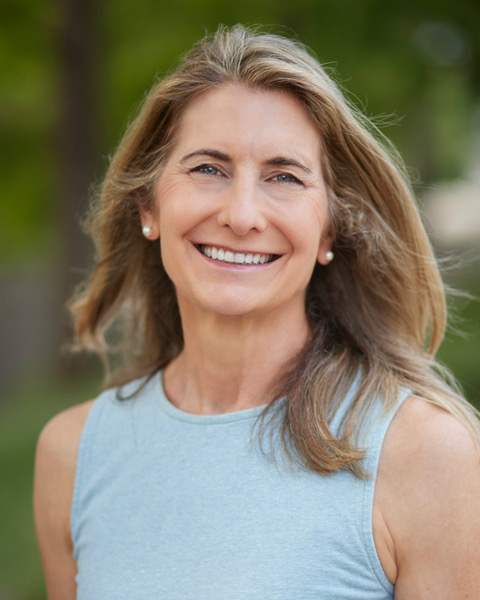
Gerilyn Soreghan – 2021-2022
January 14, 2022
Gerilyn Soreghan, Ph.D. is David L. Boren Professor, Director, and Eberly Family Chair of Geosciences in the Mewbourne College of Earth and Energy School of Geosciences at the University of Oklahoma. As a primarily field-based sedimentary geologist, she studies Earth’s history to better understand what Earth's sedimentary record can teach us about climate behavior, including the drivers of climate change and carbon cycling, and the responses of the biosphere to climate change. She is the author of openly published articles such as Loess in eastern equatorial Pangea archives a dusty atmosphere and possible upland glaciation and Seismic Reflection and Electrical Resistivity Imaging Support Pre-Quaternary Glaciation in the Rocky Mountains (Unaweep Canyon, Colorado).
How have you benefited from publishing open access?
I think the best aspect of open-access publishing is the free availability to all readers. As scholars, this hopefully translates into a wider dissemination and readership, and thus greater impact for both my and OU’s research profile. Critically, it also represents part of our payback to society for the privilege of pursuing research, because we do so with (typically) the support of the general public and others.
Would you encourage others to publish open access? If so, why?
Yes, for the reasons I stated above. However, with the caution to guard against publishing in predatory or low-quality journals. I like to target society and not-for-profit publishers, but these can sometimes require payment for open access, which can be a financial barrier.
In making your work openly available, do you feel like you received the support you needed from OU Libraries?
Certainly OU Libraries has been enormously helpful in a number of ways. For example, for helping to partially fund open access (through subvention funds), as well as in-kind support in the form of substantial time spent in helping to upload previously published materials to SHAREOK, and checking the legality of such postings. I’ve always found OU Libraries to be incredibly supportive, responsive, and knowledgeable in help navigating the publishing landscape.
Do you have any specific advice for other scholars who are considering publishing openly?
Mainly to reinforce the caution to guard against falling prey to predatory journals, and also the positives (to oneself, OU, and society) of trying to publish open access.
Top of page

Belinda Biscoe – 2021-2022
October 11, 2021
Belinda P. Biscoe, Ph.D. serves as the Senior Associate Vice President for Outreach in the College of Continuing Education at the University of Oklahoma. Additionally, she bears responsibility for the Southwest Center for Human Relations Studies at the University of Oklahoma, which annually plans, hosts, and administers the National Conference on Race and Ethnicity in American Higher Education (NCORE). NCORE, with support from OU Libraries, publishes the interdisciplinary, peer-reviewed journal, the Journal Committed to Social Change on Race and Ethnicity (JCSCORE), for which Dr. Biscoe is Founding Editor. JCSCORE is committed to promoting an exchange of ideas that can transform lives, enhance learning, and improve human relations in higher education.
Why is open access important to you and/or your organization?
As founding editor of the Journal Committed to Social Change on Race and Ethnicity (JCSCORE) in higher education, open access, for me, equals equity. One of our goals is to leverage the journal as a mechanism for creating a rich exchange of dialogue and ideas among researchers, practitioners, policy makers, and everyday folks about how we open doors of opportunity for diverse and underrepresented groups in higher education by removing barriers and structural inequities. Additionally, The Southwest Center for Human Relations Studies, under Outreach/College of Continuing Education at the University of Oklahoma, annually plans, hosts, and administers the National Conference on Race and Ethnicity (NCORE) in Higher Education, which has attendees representing over 1,200 institutions of higher education, as well as attendees representing other groups outside of higher education. JCSCORE has become an excellent platform for those engaged in diversity, equity, and inclusion (DEI) research and other work to submit articles for publications addressing a range of difficult topics and issues impacting higher education. One recent article received 10,635 views. JCSCORE allows conference attendees and others to keep a spotlight on DEI issues after the conference ends. Because JCSCORE is an open access journal, attendees can share this important information and research with their friends and colleagues upon returning to their home institutions and organizations.
Open access affords academics and everyday people to have research available at no cost. Consequently, we reach a broader readership and have the potential to impact communities beyond the academy. Anyone with internet services, whether through a private provider or through public libraries, can retrieve open access publications at no charge. This research, which has been peer-reviewed, is more likely to be shared on social media and therefore reaches more audiences. Having information on social media, which has been vetted and is credible helps with promoting more sound science not only to academics, but to the public.
In publicly funded universities, it is especially important that everyone has access to published research since public dollars help support our institutions and the resulting research. A challenge with research, especially in education, is moving research into practice with more rapidity. Practitioners are often unaware of evidence-based practices and emerging trends and issues in a discipline because they sometimes don’t access journal articles requiring a subscription. By the time educational research reaches the field new research is emerging. This lag in research to practice often prevents the field of education from realizing desired outcomes. In Outreach/College of Continuing Education, we focus on the life-long learner, individuals who are thirsty for knowledge throughout every stage of their life. Open access allows life-long learners to have a continual repository of quality information at their disposal, since knowledge is constantly changing. Finally, in my research and work I collaborate with others to net the best benefits for communities, groups, and organizations. Open access to scholarly work encourages more cross-disciplinary collaboration in the academy leading to new discoveries and solutions addressing human and societal needs resulting in broader impacts.
Do you have any specific advice for scholars who want to make their work openly available?
As is the case with everything, there are pros and cons. First the pros-- I understand that publishing in an open access journal allows authors to maintain the copyright on their original work. This eliminates asking permission to share original publications beyond the journal. Next, more audiences can be reached, thereby expanding readership. Publishing in an open access journal also increases the likelihood that more people can find and cite your work, thus resulting in having greater impact. On a cautionary note—make sure that the open access journal meets a high standard; this includes a peer-review process, being respected by those in the field and being indexed in reputable directories.
Do you feel like you received the support you needed from OU Libraries when you published?
Staff at OU Libraries has provided amazing support. They are great communicators, exceptionally responsive to questions, address any issues that arise, and work with us as a team. We honestly can’t ask for better assistance. Your support helps contribute to JCSCORE’s success. THANK YOU SO MUCH!
Top of page
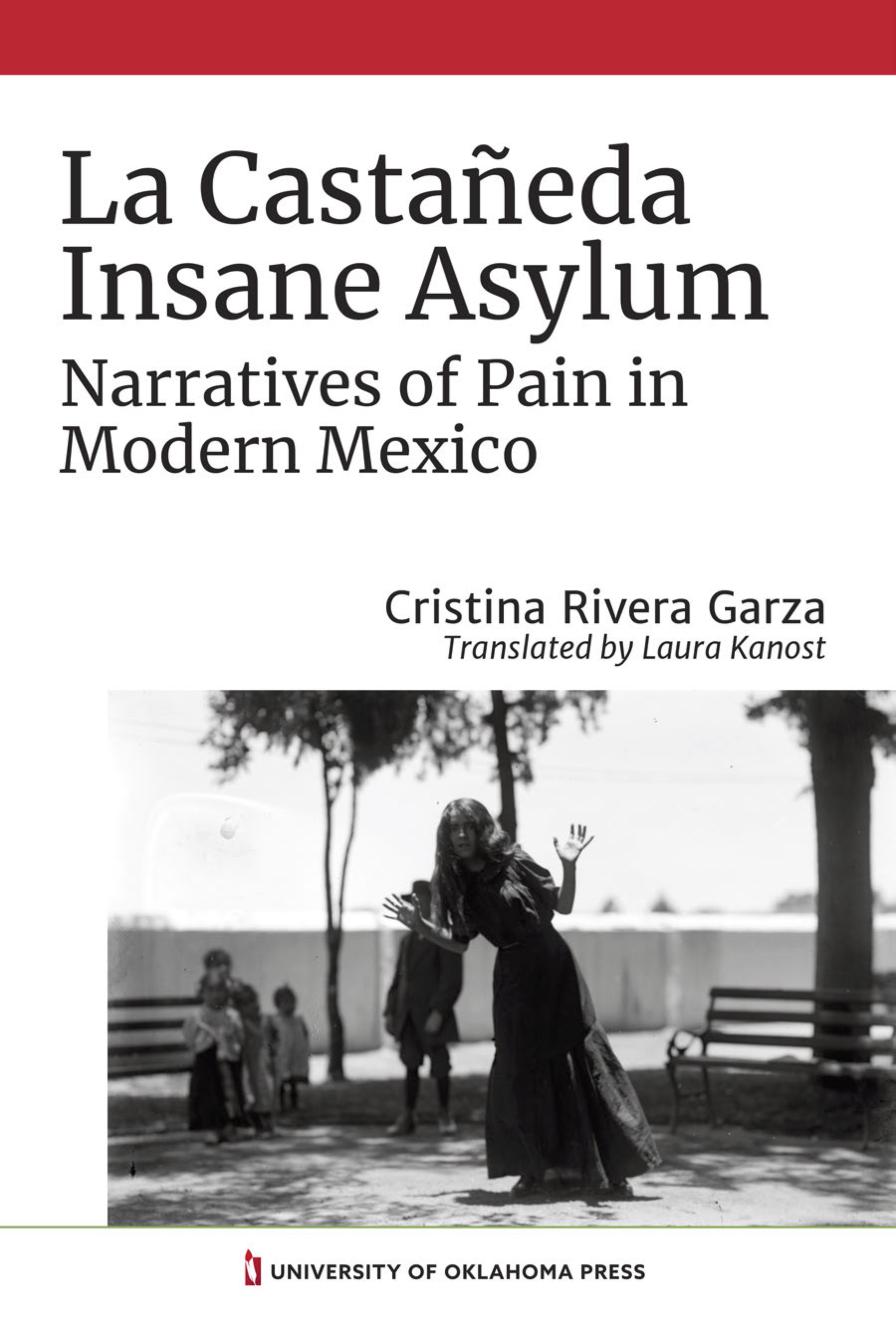
OU Press – 2020-2021
January 2021
OU Press is the publishing branch of the University of Oklahoma and is a leading publisher in areas including the American West and Native American history and culture, as well as disciplines ranging from classical studies to environmental history to ancient languages.
In September 2020, OU Press published its first open monograph, La Castañeda Insane Asylum: Narratives of Pain in Modern Mexico. Written by Cristina Rivera Garza, a fiction writer and recipient of the 2020 MacArthur Foundation Genius fellowship, and translated by Laura Kanost, La Castañeda Insane Asylum delivers the first inside look at Mexico’s La Castañeda General Insane Asylum, a public mental health institution that opened just prior to the start of the Mexican Revolution.
The monograph was published as part of the Sustainable History Monograph Pilot (SHMP). With financial support from the Andrew W. Mellon Foundation, the SHMP produces open access digital versions of high-quality, peer-reviewed monographs in the field of history from a variety of leading university presses. Along with TOME, the SHMP is one of a series of open access publishing initiatives that OU Press currently participates in. OU Press Director Dale Bennie states, “The University of Oklahoma Press is committed to the highest caliber of research-based scholarship designed to cultivate and disseminate knowledge as widely as possible at an affordable cost. We believe that the most viable way to disseminate scholarship more widely is to create an ecosystem that supports all stakeholders: researchers and scholars, authors, publishers, libraries, and readers. The range of needs across these participants requires a sensible and diverse approach to sustaining the production of knowledge. We will always be willing to participate in innovative programs that are working to develop sustainable models for open access publications.”
Recently, OU Press has found a home in SHAREOK, the joint institutional repository for OU Libraries, Oklahoma State University Libraries, and the University of Central Oklahoma Max Chambers Library. Here, users can access a free digital edition of Rivera Garza’s monograph, a first for OU Press in their efforts working “in the open.”
Top of page
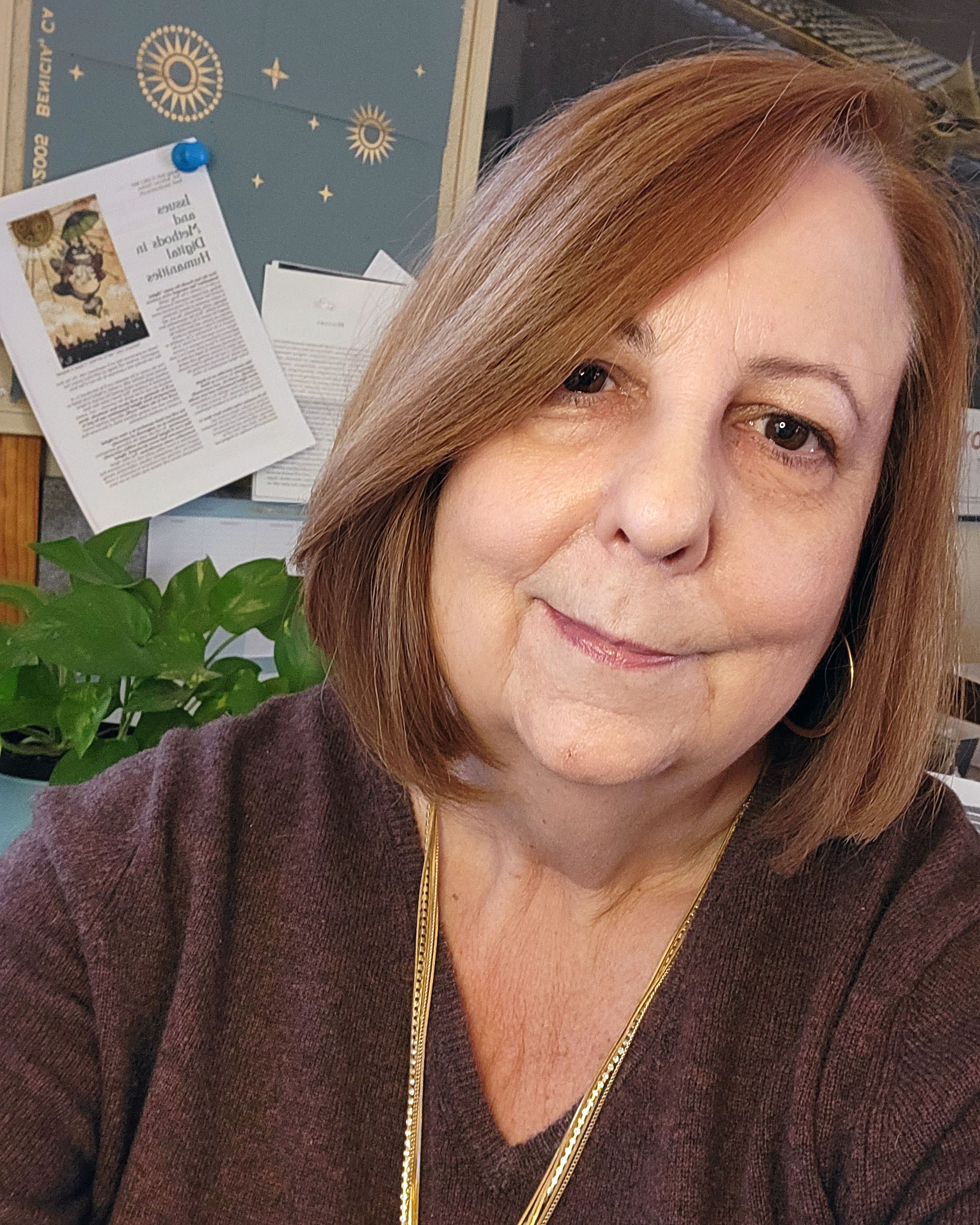
Katherine Pandora – 2020-2021
April 8, 2021
Katherine Pandora is an Associate Professor of History of Science for the Department of History of Science, Technology, and Medicine. She researches and teaches about science in the public sphere from several different vantage points: studying the relations between politics and the scientific enterprise as they play out in research settings and cultural arenas; exploring how natural history has served as an “intellectual commons” for contestations by both the public and professionals about the nature of scientific authority; and by taking science in popular culture seriously, in order to better understand how scientific knowledge circulates “in the vernacular.” She is the author of open article Science in the everyday world: Why perspectives from the history of science matter.
I was pulled into the open access domain in the early 2000s. . .
. . . when open access digital archives emerged. I was particularly excited when film archivist Rick Prelinger began donating items from his massive stockpile of “ephemeral films” (made for educational, advertising, industrial, and government purposes) to the Internet Archive in 2001. In 1996 I’d been thrilled when he made small groups of titles from his private collection publicly available as Our Secret Century: The Darker Side of the American Dream on cd-roms (a technology that I found far superior to vhs tape) -- however, they were still frustratingly beyond my reach due to the cost. It was a stunning turn of events when just a few years later thousands of these films became openly accessible as part of the Prelinger Archive.
In the previous decade I had no idea that I would be among the last cohort of doctoral students who would expect primary source historical research to be conducted almost solely at physical archives that were restricted to a small number of scholars who were only able to access materials under stiff constraints -- or that, as a new professor, I would be re-training myself to make use of a more expansive and continually-morphing historical research ecosystem that had emerged due to digitization, the spread of the Internet, and the rapid growth of the world wide web, and which would make open access archives possible.
The most direct way I’ve participated in open access scholarship to date is by . . .
. . . making as much of my research openly accessible as possible by placing it in the SHAREOK repository (thanks to the guidance and assistance of OU Libraries’ Office of Open Initiatives and Scholarly Communication). Where before this research faced inward toward the library shelves and reserved only for those who had subscription access, now it faces outward toward the public world. Because of the university’s open access repository, anyone can find my research for any number of reasons -- even due to simple curiosity about, say, the underlying issues of encountering science in our everyday worlds (which you can find here) or what “the children’s republic of science” looked like in the early 19th-century U.S. (which you can find here). Not everything that I think should be in the repository is currently available: there are some publishers who have refused or ignored my requests. Engaging in open access options has made me more keenly aware of the ethical ramifications of our current publishing norms, and rather than signing away the rights to my own (publicly-funded) research without question as I have done before, in the future I’m instead going to first ask for open access accommodations, through procedures that OU Libraries has already set in place.
My next open access challenge is to develop a publication model for a born-digital version of a long-standing book project . . .
. . . I’ve been planning on science and popular culture, based on my more than twenty years of research and teaching on this topic. One of the drawbacks to staying with a conventional print format is that books that are designed as introductions to content, issues, and methods in a topic area simply cost too much today, with prices attuned to what the research library market will bear rather than having real-world people’s budgets in mind. But price considerations aren’t the only ones driving my decision to try something different. I’ve been frustrated for some time that many academics see the digital sphere in such conservative terms, content primarily to use it as a space to replicate legacy print formats as closely as possible rather than reimagining what “an article” or “a book” can be, particularly when approached as open access projects. The lack of incentives to move beyond standardized modes -- administrators typically state that they favor innovation and risk-taking, but they reliably reward efforts that remain within status quo parameters -- also inhibits experimentation. Publication options that support improvisational experimentation do exist, and the one I’ll be working with is an open source multimedia platform named Scalar, a project of the Alliance for Networking Visual Culture, that can handle custom-designed applications, incorporate recursive and non-linear formats, and that allows for collaborative authoring and embedding reader commentary (for examples, see their showcase). Beyond exploring what new kinds of learning environments new modes of publication can encourage, I remain committed to open access options because they encourage us to think differently about how we do historical research, who we do it with, and why.
Top of page
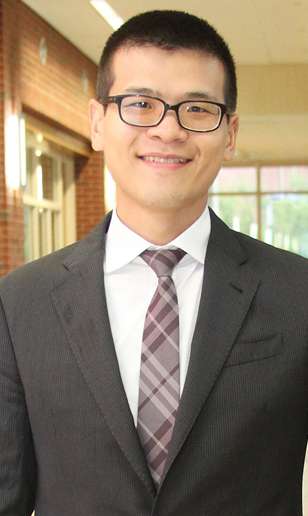
Chung-Hao Lee – 2020-2021
March 1, 2021
Chung-Hao Lee is an Associate Professor for the Aerospace and Mechanical Engineering department of the Gallogly Department of Engineering. Dr. Lee is an Affiliated Faculty Member of the Institute for Biomedical Engineering, Science and Technology (IBEST) at the University of Oklahoma. He is the author of the open articles An Investigation of the Anisotropic Mechanical Properties and Anatomical Structure of Porcine Atrioventicular Heart Valves and Shape Memory Polyurethane with Porous Architectures for Potential Applications in Intracranial Aneurysm Treatment.
Why do you choose to publish open access?
It used to be a practice in my field not to publish any papers in open-access journals, as these journals weren’t the highly recognized ones, and the journal review & publishing processes weren’t necessarily academically rigorous. This culture of scientific publishing has dramatically changed in recent days, greatly due to open access policies required by more funding agencies (e.g., the NIH, AHA, etc.). Now, there are more and more top-tier journals becoming purely open access (such as my recent work in Nature’s Scientific Reports) or providing an open-access publication option in addition to the traditional subscription. Another reason for publishing my research in open-access journals is actually promoted by the Open Access Fund generously sponsored by OU Libraries. Publishing in those open-access journals allows others to easily access the research papers without needing to subscribe to the journal and is also beneficial in increasing the visibility of my work.
Would you encourage others to publish open access? If so, why?
I would highly recommend this journal publication option, as long as the journal is not a phishing one. Easy access for other researchers, an increase in the visibility of the research work, and fast publication turn-around are benefits I’ve seen by publishing articles in open-access journals.
Did you experience any challenges publishing open access, and if so, describe them?
I have not had any bad experience in publishing my papers in open access journals. Two potential challenges would need to be considered: (i) whether the journal is spam or phishing (primarily seeking the open-access publication fee without guaranteeing the quality of the work), and (ii) whether funding support is available to cover the fee (sometimes as expensive as US$2,000). Then again, many traditional publications charge for figures, page charges, and support is often required there too.
Top of page
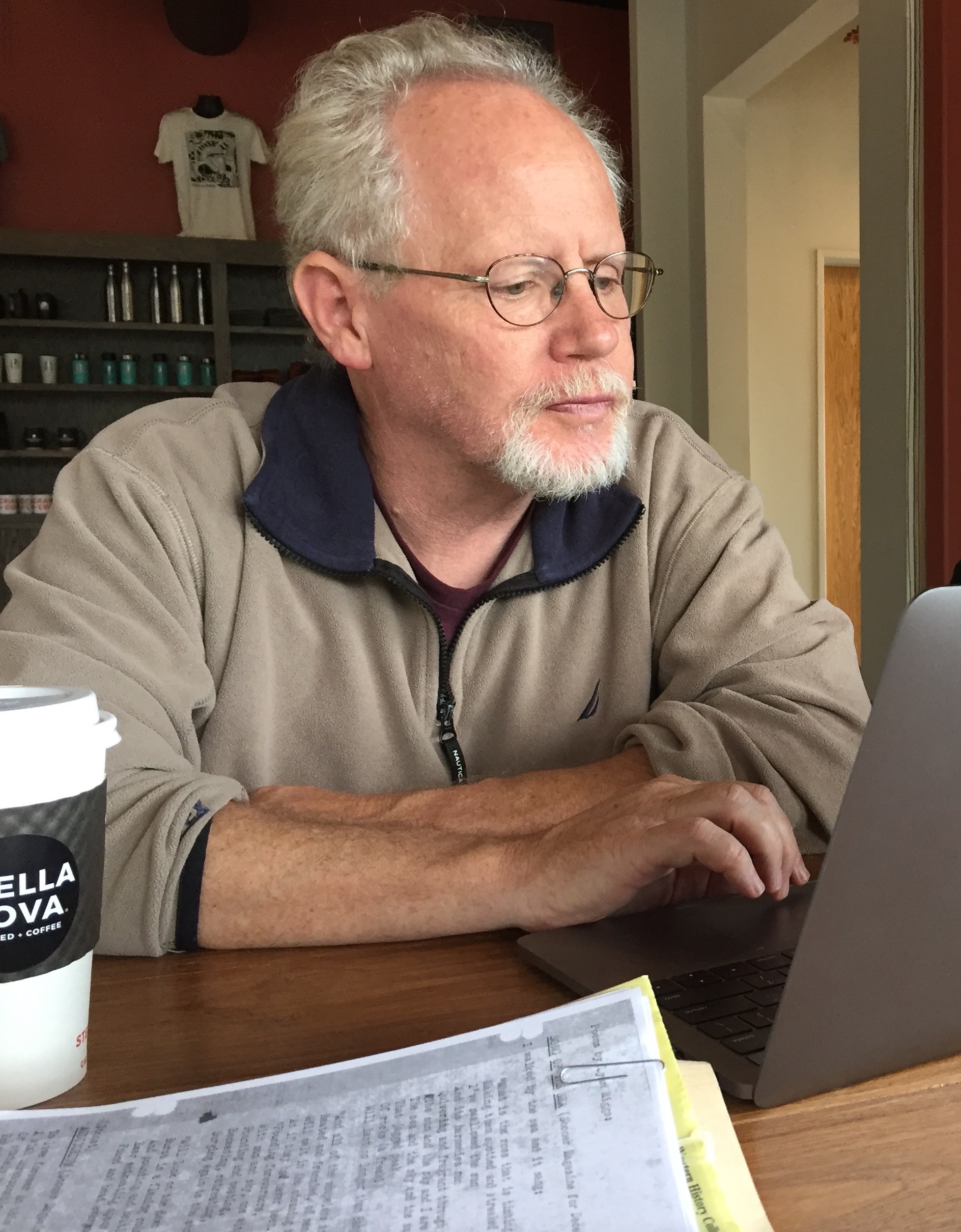
Crag Hill – 2020-2021
February 16, 2021
Crag Hill is an Associate Professor for the Instructional Leadership and Academic Curriculum department in the Jeannine Rainbolt College of Education. He is the editor and co-founder of Study and Scrutiny: Research on Young Adult Literature, an open access journal published by OU Libraries, and author of the openly published article From Bootstraps to Hands-up: A Multicultural Content Analysis of The Depiction of Poverty in Young Adult Literature.
How much did you know about open access before you started publishing openly?
In the last ten years I have received almost daily email queries to contribute to an open-access journal—all from journals outside my field of expertise. Those all-too persistent queries—academic spam—initially dimmed my view of open-access publishing.
On top of that, in my academic unit at a previous university, open-access journals, even if rigorously peer-reviewed, carried far less weight than established journals. I understood their argument: open-access journals could lose support or interest and fold (many have, including one I published in); scholarship would disappear and have no impact (ya know, impact factor).
How have you benefited from publishing open access?
Along with publishing research on comics and the depiction of young adult literature in open-access journals, I have been co-editor of an open-access journal at OU for five years. So my research interests have been enhanced through this platform, but even more so my reach, my/our network has grown exponentially. Study and Scrutiny: Research on Young Adult Literature has played an important role in the growth of critical and empirical research into all aspects of young adult literature.
Did you experience any challenges publishing open access, and if so, describe them?
As alluded to above, there still is a stigma around publishing in open-access journals. This continues to be a challenge for Study and Scrutiny. We were working on a guest-edited issue that would include research by BIPOC scholars on young adult literature. We had initial interest in this project, but then pre-tenure BIPOC scholars were concerned that publishing in an open-access journal would not meet the bar set by their institutions, often set higher for them in Research 1 institutions than for non-BIPOC faculty.
Do you feel like you received the support you needed from OU Libraries when you published?
From the beginning, Study and Scrutiny: Research on Young Adult Literature has received all the support we have asked for. Recently, the most gratifying support is the research OU Libraries has gathered to support open-access journals, including evidence that articles published in open-access journals are gaining more citations than articles behind a paywall. That kind of data puts a capital A in Access, a critical issue as the production and consumption of knowledge moves more and more into digital spaces. We think the stigma associated with these platforms will dissolve.
Top of page
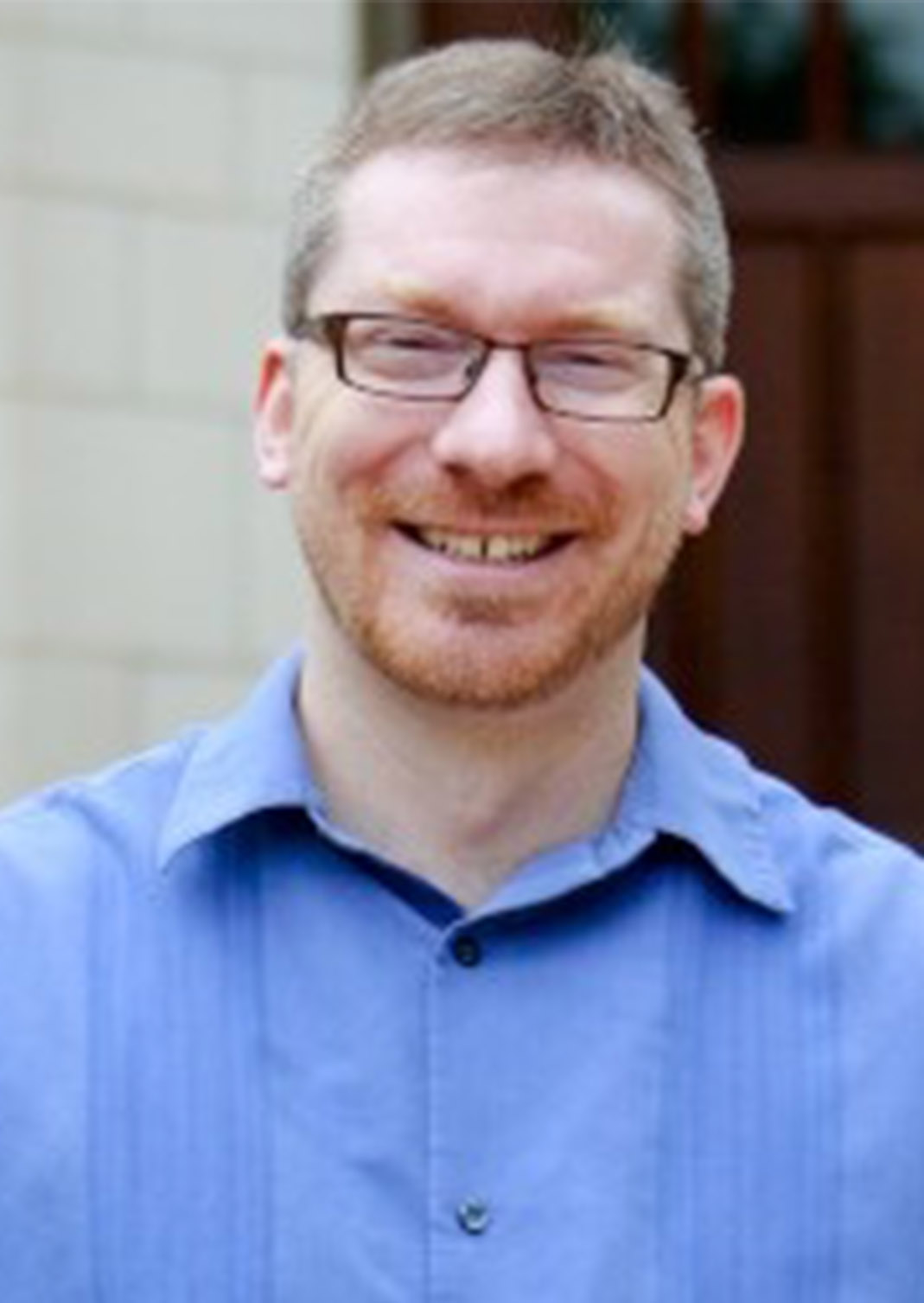
J.P. Masly – 2020-2021
November 1, 2020
J.P. Masly is an Associate Professor in the OU College of Arts & Sciences Department of Biology. He is the author of the openly published video Tiny Fruit Flies Answer Big Questions, and open articles Divergence in female damselfly sensory structures is consistent with a species recognition function but shows no evidence of reproductive character displacement and High-Resolution Genome-Wide Dissection of the Two Rules of Speciation in Drosophila.
Why do you choose to publish open access?
There are several reasons that I choose to disseminate my work via OA, but the primary reason is that I want my scholarly work to be freely available to the largest possible audience. Most of my research work is made possible by federal research grants that come from tax-payer dollars, and I feel strongly that the scientific results obtained from those funds are accessible to all stakeholders— not just those who have access to high-priced journal subscriptions.
I also feel strongly that institutional resources should be invested in the most effective way possible to benefit the university community. OA is a powerful mechanism to do this. When scholars commit to freely sharing the products of their work, institutions are freed from committing large proportions of their fiscal resources to "buying back" access to that very work.
Finally, I choose to publish in OA journals so I can retain the copyright to my work. Traditional publishers often ask authors to transfer the copyright to the publisher as part of the publishing agreement. Without holding the copyright, if I want to use a figure from my paper— a figure that I produced— I have to request permission from the publisher to use that figure elsewhere. Why should an academic journal publisher have the right to decide if and how I use my intellectual products that were made possible by federal funds?
How have you benefited from publishing open access?
I think the biggest benefit has been increased visibility of my lab's work from interested stakeholders that would not have been able to otherwise access our papers. In particular, OA has provided potential graduate students and postdoctoral scholars who are interested in joining my lab group easy access to our published work. They can read all of our recent papers and decide whether our current research directions are a good fit for their research interests.
Would you encourage others to publish open access? If so, why?
It is, of course, an individual scholar's prerogative to disseminate their work as they see fit, but considering all of the advantages of publishing OA, I cannot encourage my colleagues enough to consider adopting OA journals as their "go to" method of publishing. Making your research products as easily available as possible to as many people as possible is a great benefit to you as a scholar.
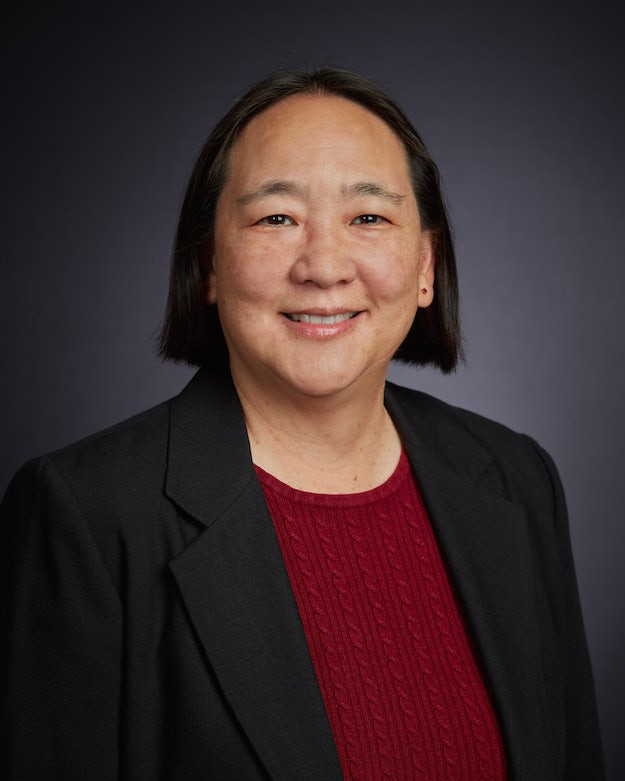
Ann West – 2020-2021
October 19, 2020
Ann West is the Associate Vice President for Research and Partnerships in the Vice President for Research and Partnerships’ office, and the Grayce B. Kerr Centennial Chair in the College of Arts & Sciences Department of Chemistry & Biochemistry. She is the author of the openly published articles Immunodominance of Antigenic Site B over Site A of Hemagglutinin of Recent H3N2 Influenza Viruses and Crystal structure and DNA binding activity of a PadR family transcription regulator from hypervirulent Clostridium difficile R20291.
Why do you choose to publish open access?
I publish open access, because I want to have our research results disseminated to the public in an open, free, and timely manner. Our work will be available to a broader audience, and this will help advance scientific research and development.
Would you encourage others to publish open access? If so, why?
I would encourage others to publish open access, because one's work will be more easily available and more widely read by the target audience as well as the general interested public.
Top of page
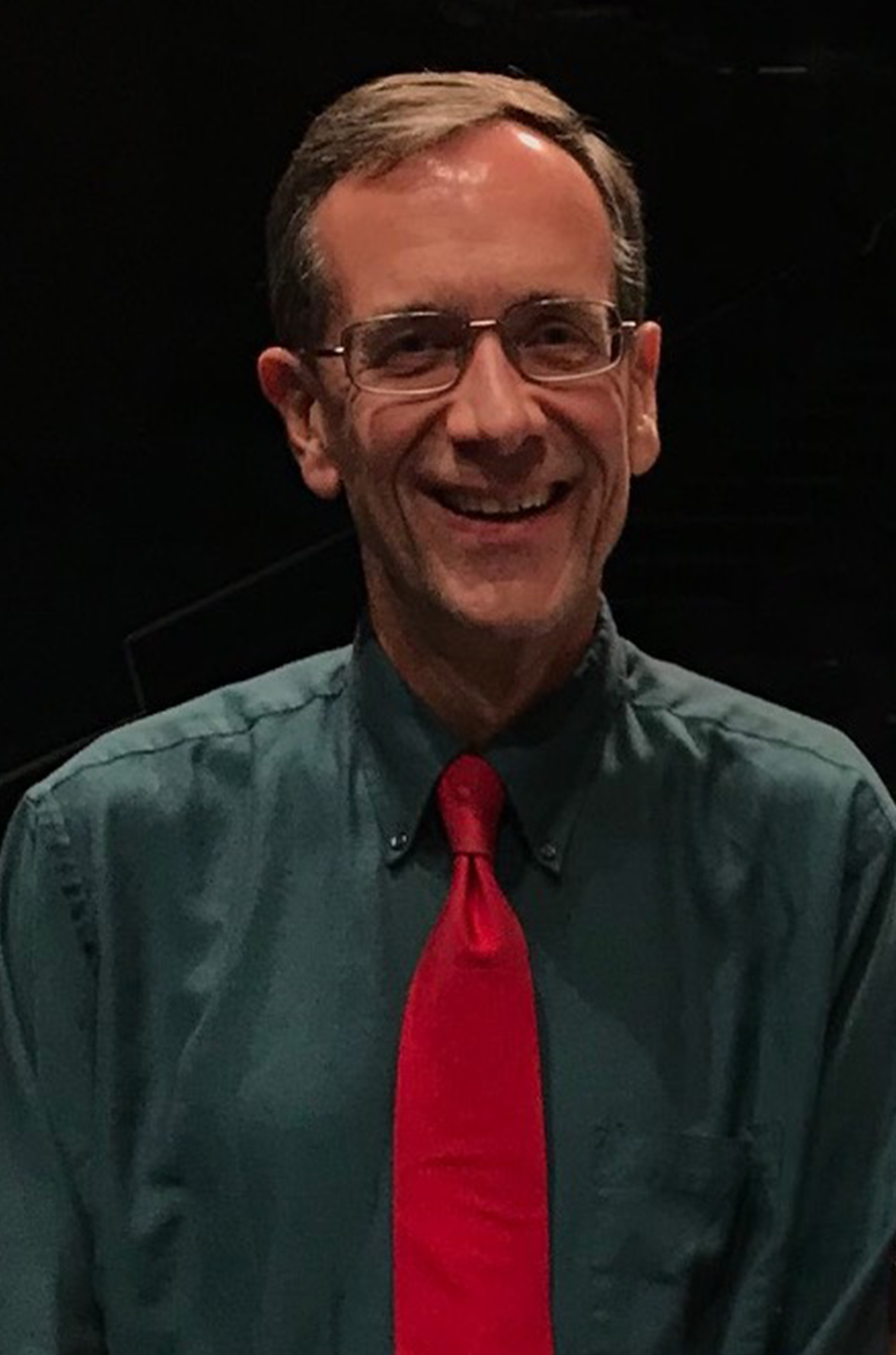
Matt Stock – 2020-2021
October 19, 2020
Matt Stock is the Fine and Applied Arts Librarian in the Weitzenhoffer Family College of Fine Arts School of Music. He is the author of the openly published resource Arban Expansion Pack: Classic Exercises Adapted for Today’s Musicians.
Why do you choose to publish open access?
I’d published an earlier collection with a medium-sized music publisher. While they included it in their advertising and I promoted it on social media, the sales, while OK for a publication of that type, were limited. I’d shared drafts of the Arban Expansion Pack with several colleagues, was confident of its value and wanted it to reach a larger audience.
How have you benefited from publishing open access?
This book reached a larger and far more international audience. In addition to downloads in the U.S. and English speaking countries around the world, it has been frequently downloaded in France, Germany, Sweden, Peru, and Spain. From comments on social media I know it is being used not only by college faculty and students but by professionals and skilled amateurs. This broader, immediate impact is largely the result of open access.
Would you encourage others to publish open access? If so, why?
Yes, the difference in the impact between my open access and traditionally published collections is undeniable. My only caution, especially for pre-tenure faculty, would be to consult with your Committee A and the faculty rules for your department to be certain that an open access project like mine or a digital humanities project will receive appropriate credit on your activity report.
Top of page
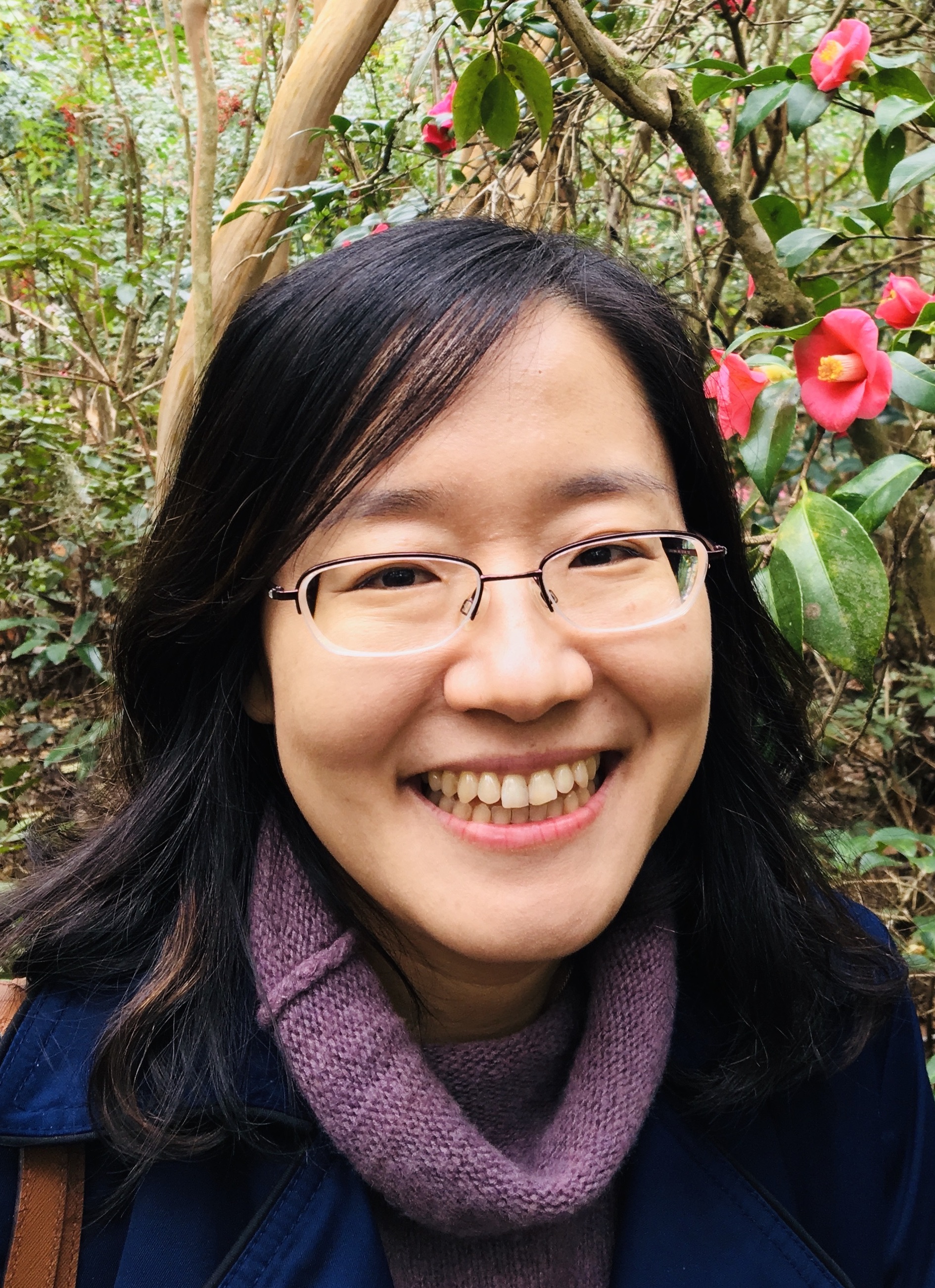
Ji Hong – 2020-2021
October 19, 2020
Dr. Ji Hong is a professor of Educational Psychology in the Jeannine Rainbolt College of Education. She is the author of the openly published articles The Role of Trust: Teacher Capacity During School Leadership Transition and The Dominance of Blended Emotions: A Qualitative Study of Elementary Teachers' Emotions Related to Mathematics Teaching.
Why do you choose to publish open access?
I chose to publish open access because I can reach readers that I want to reach more easily. My articles target teachers, school administrators, and others involved in education. Some primary and secondary schools fund journal subscriptions, but rarely to the extent of colleges and universities. Open access allows my target readers to access my work.
How have you benefited from publishing open access?
My articles have wider readership since people can access the journal without subscription. Open access articles are also highly ranked in Google and Google Scholar search, further promoting the work.
Would you encourage others to publish open access? If so, why?
Yes, as it makes new knowledge publicly available to people outside university academic circles. This is a more equitable and just distribution of ideas.
Top of page